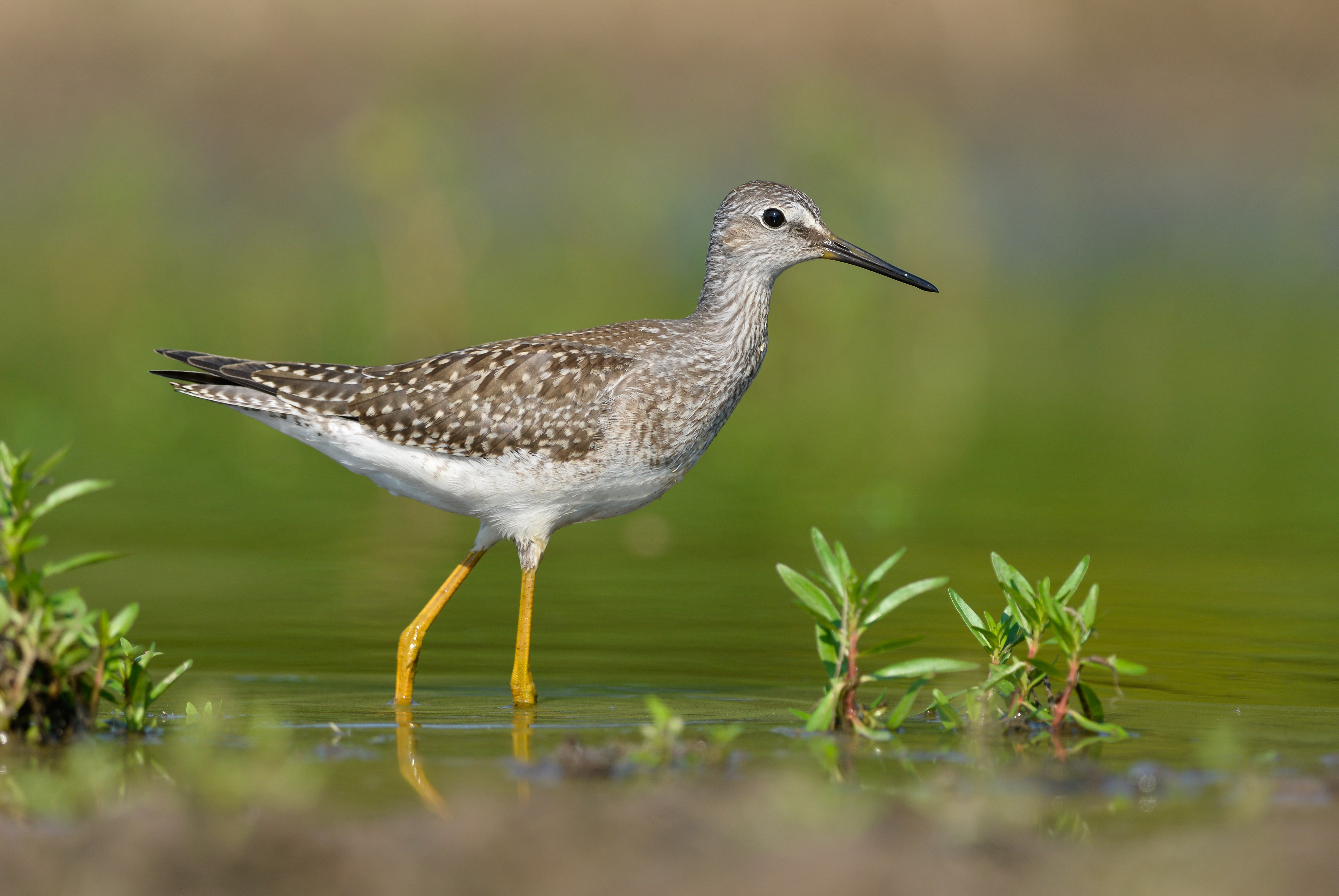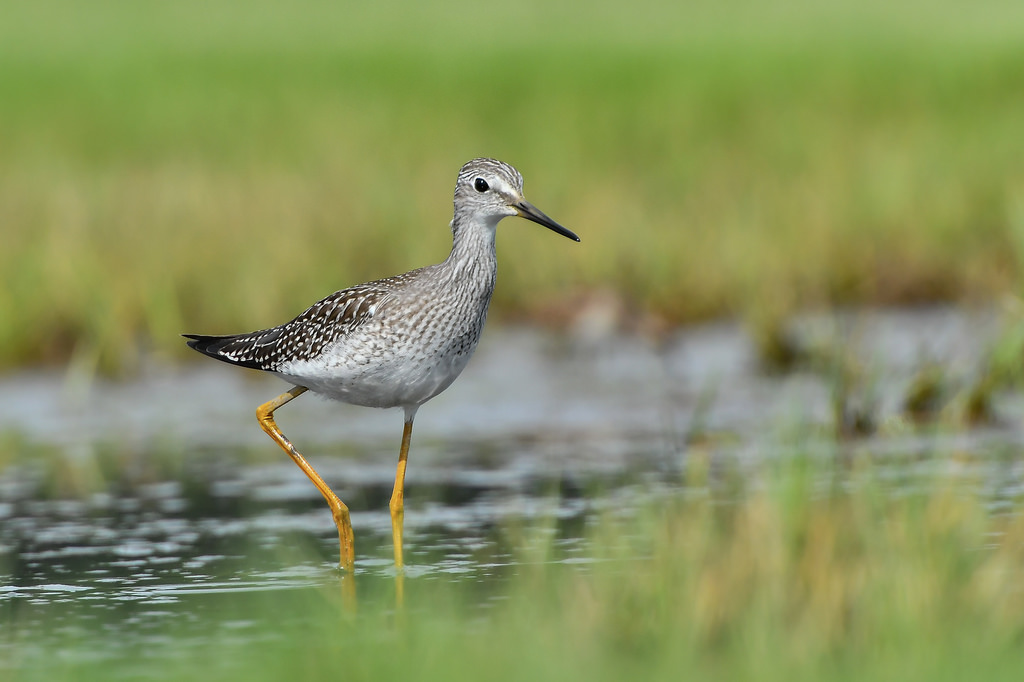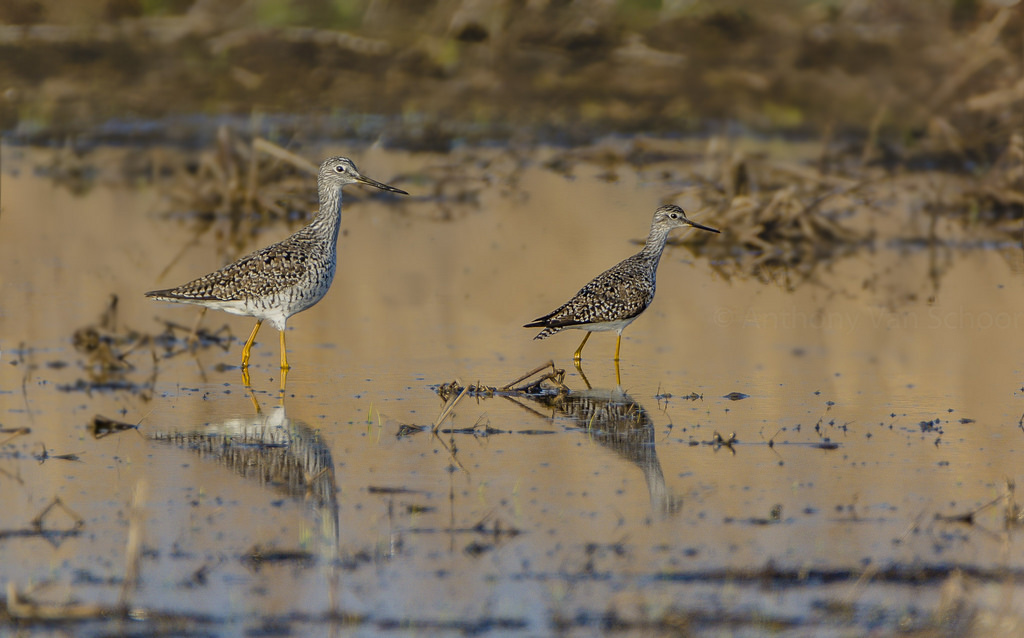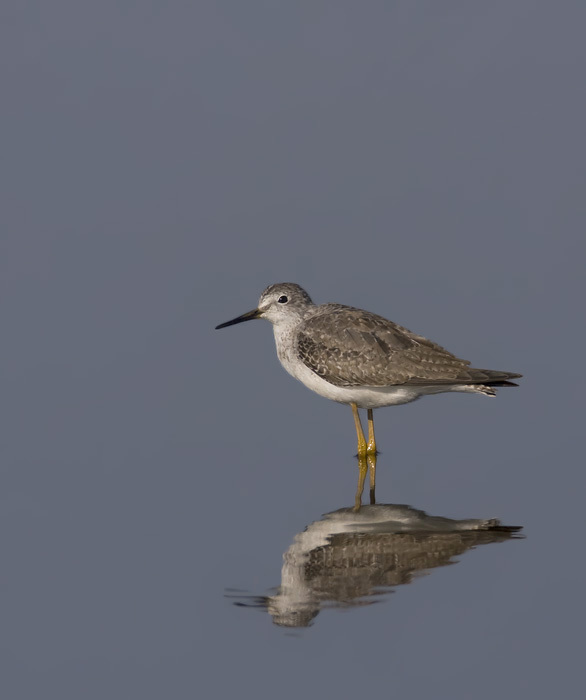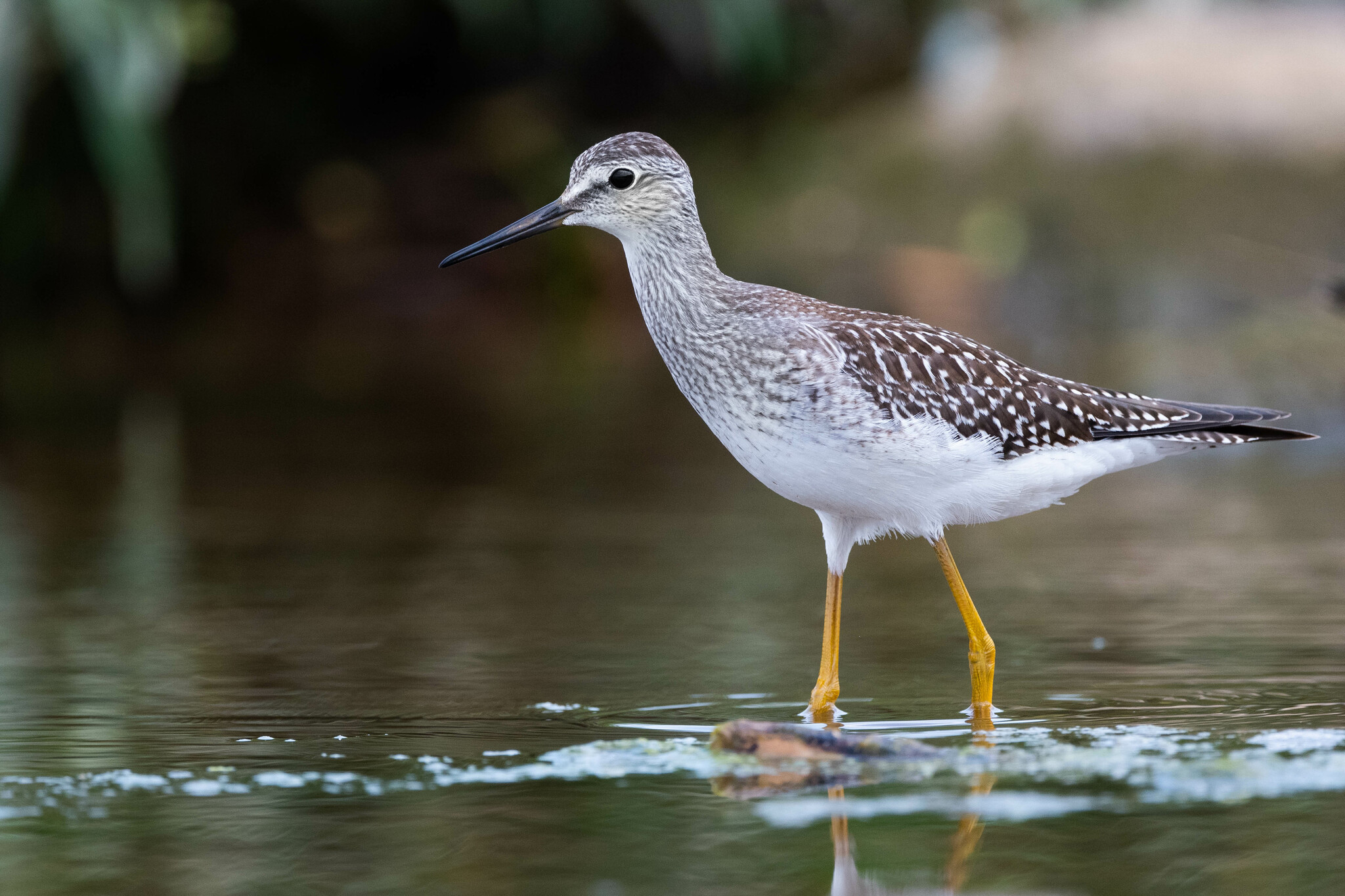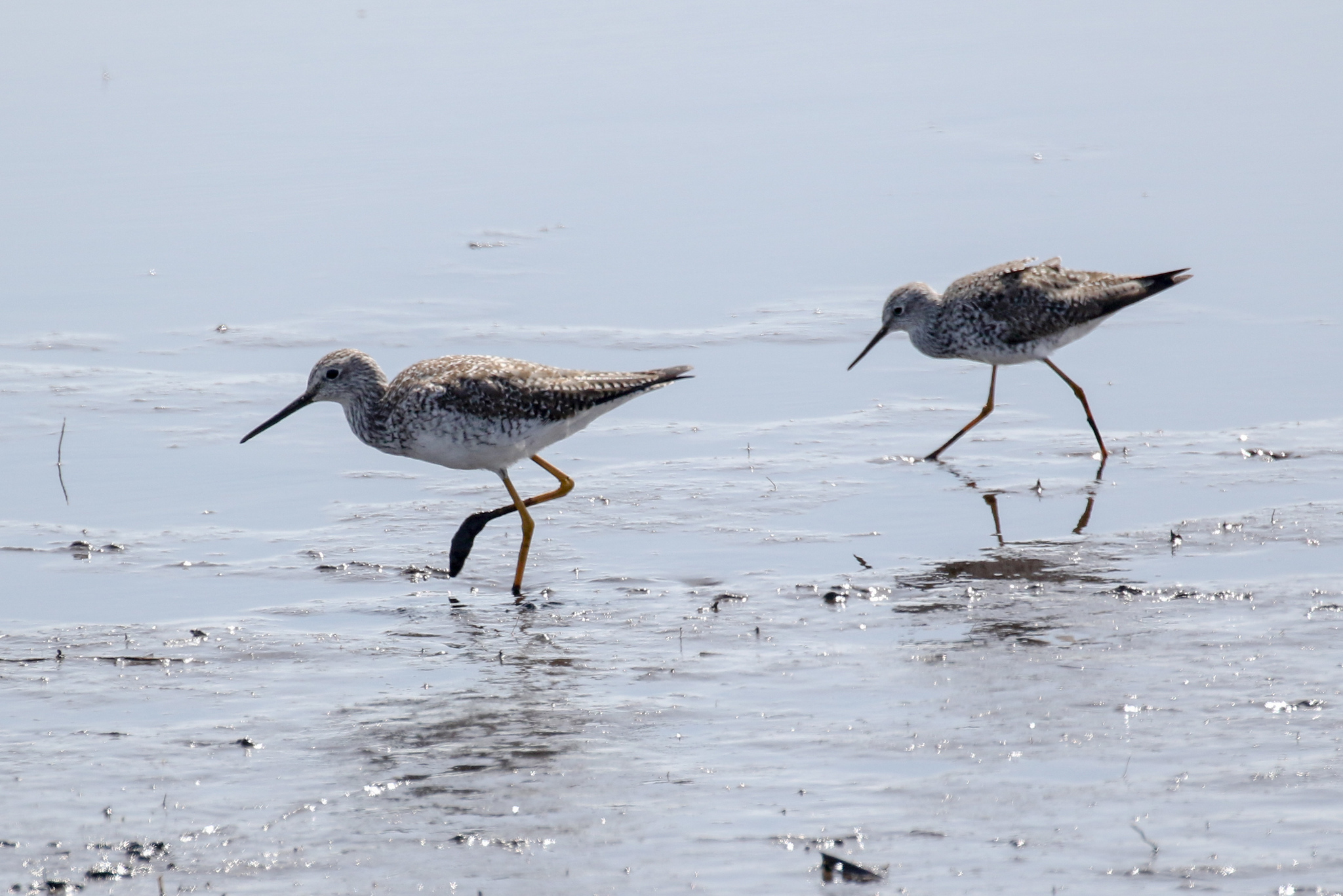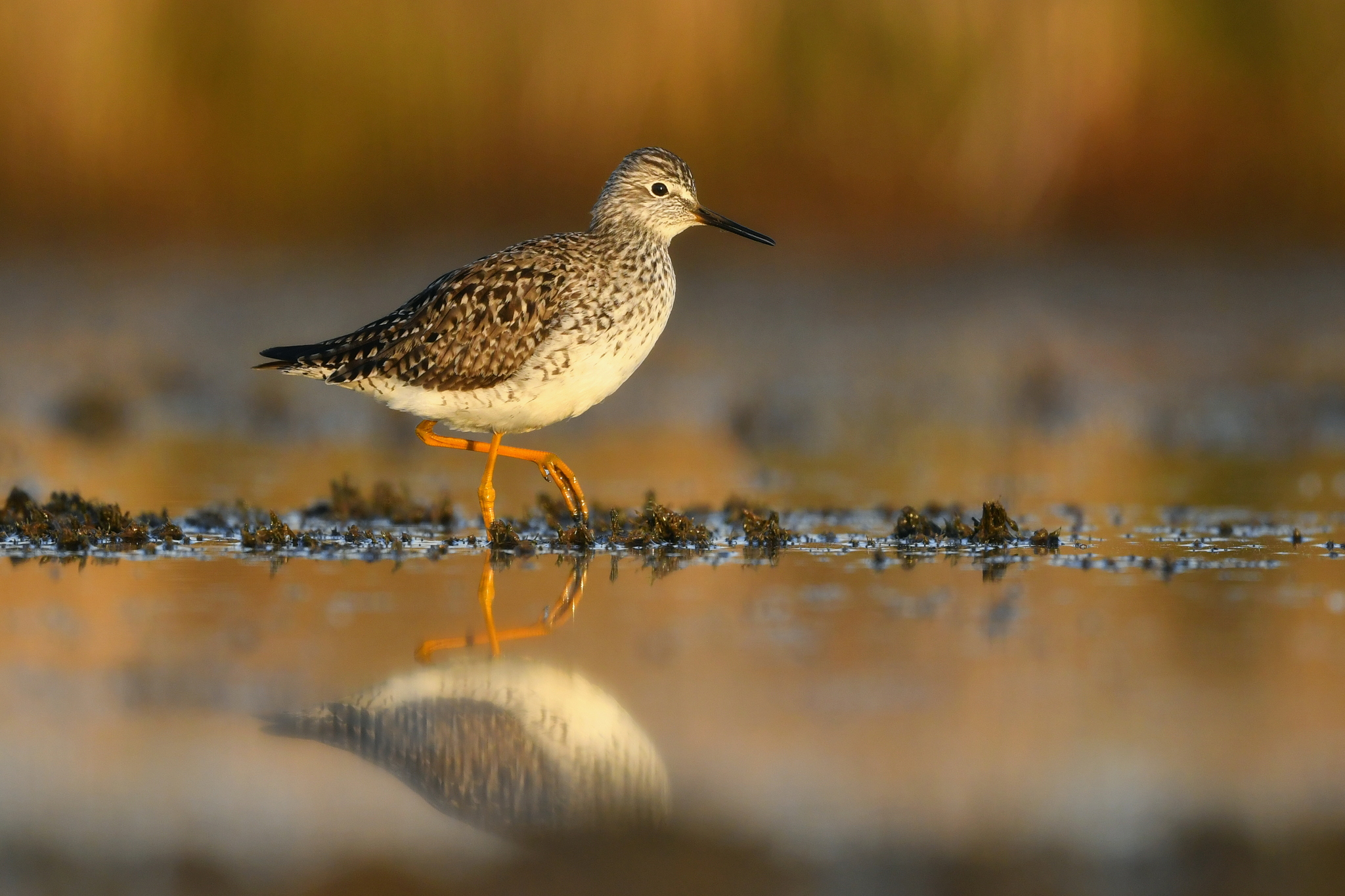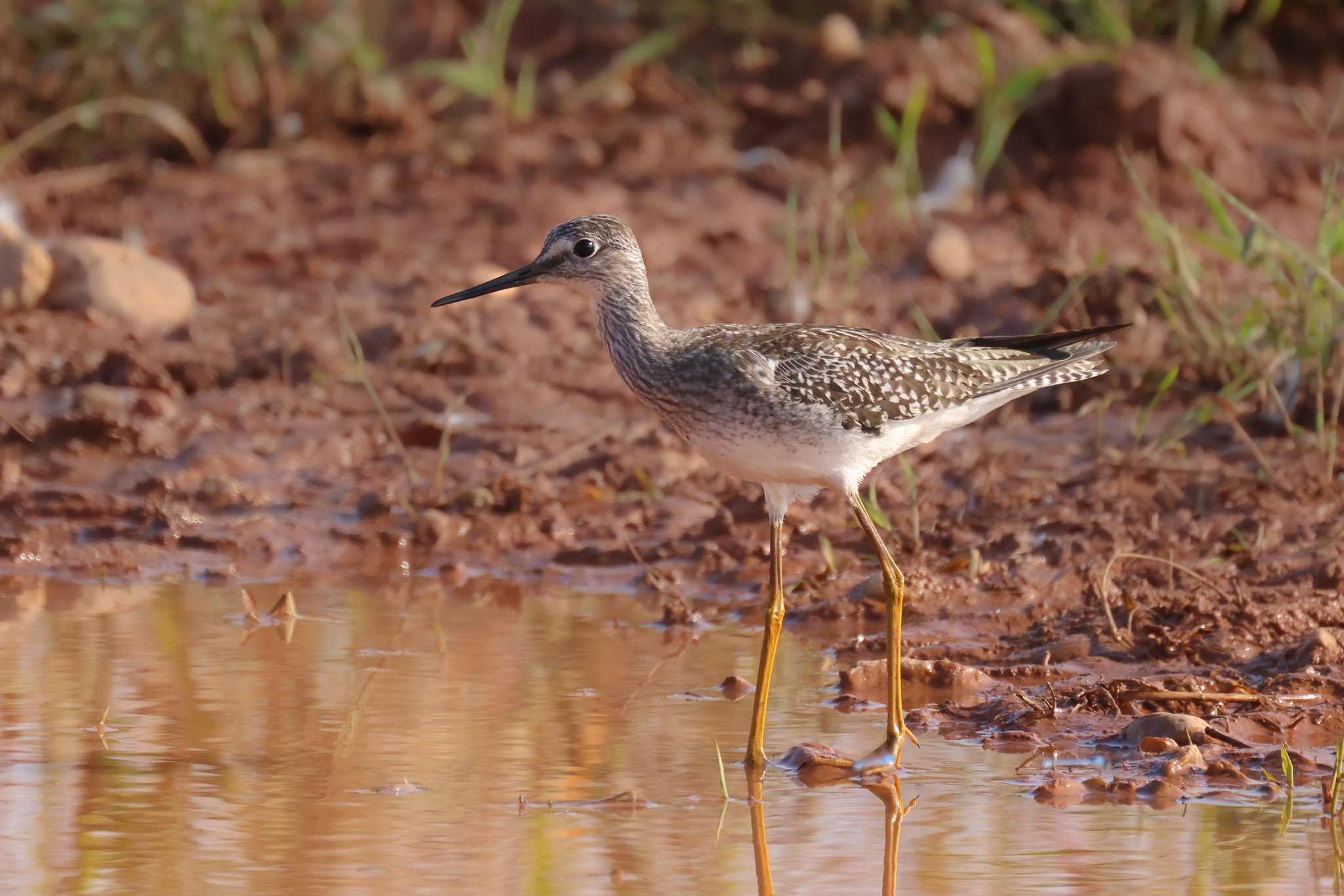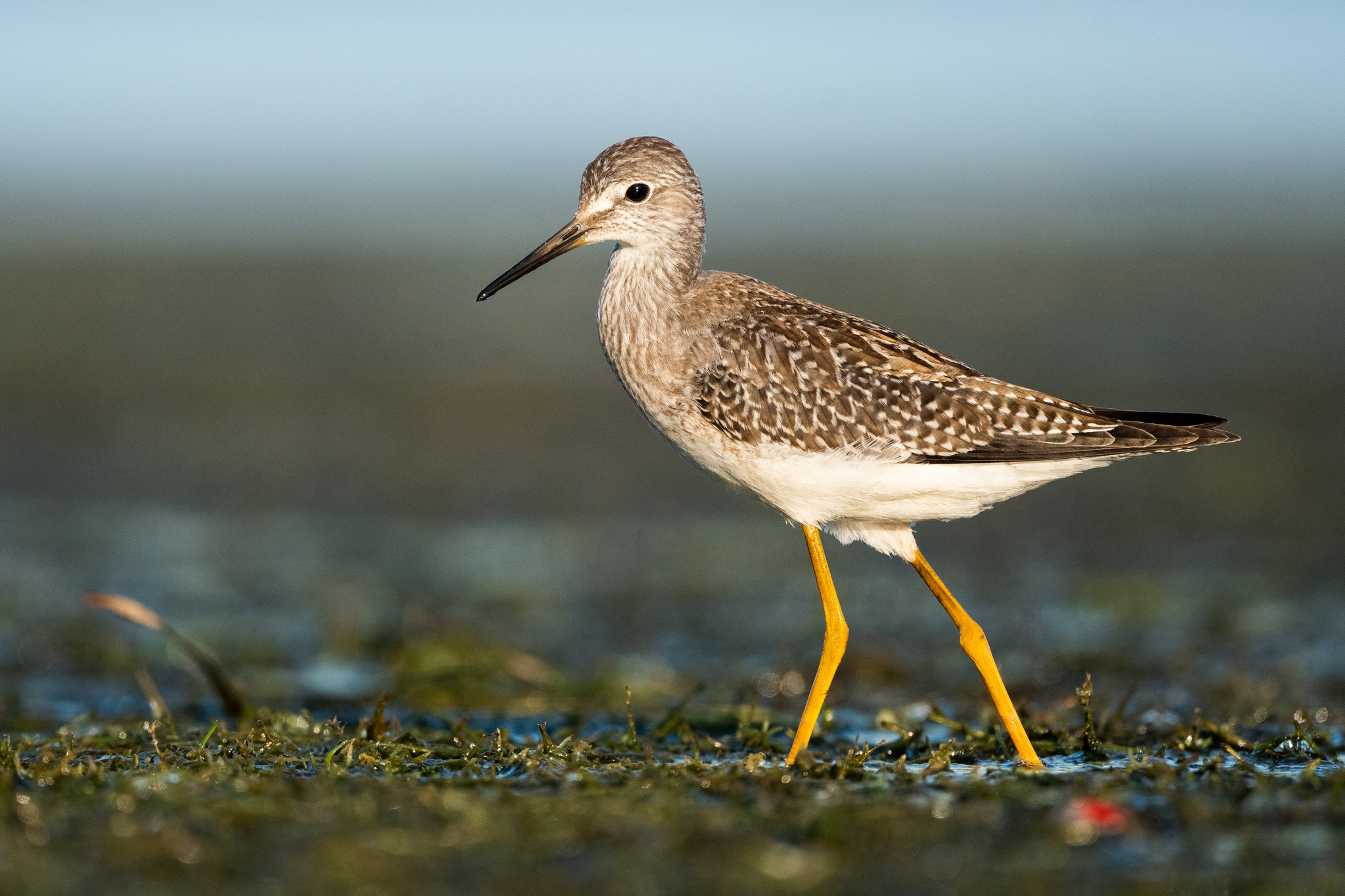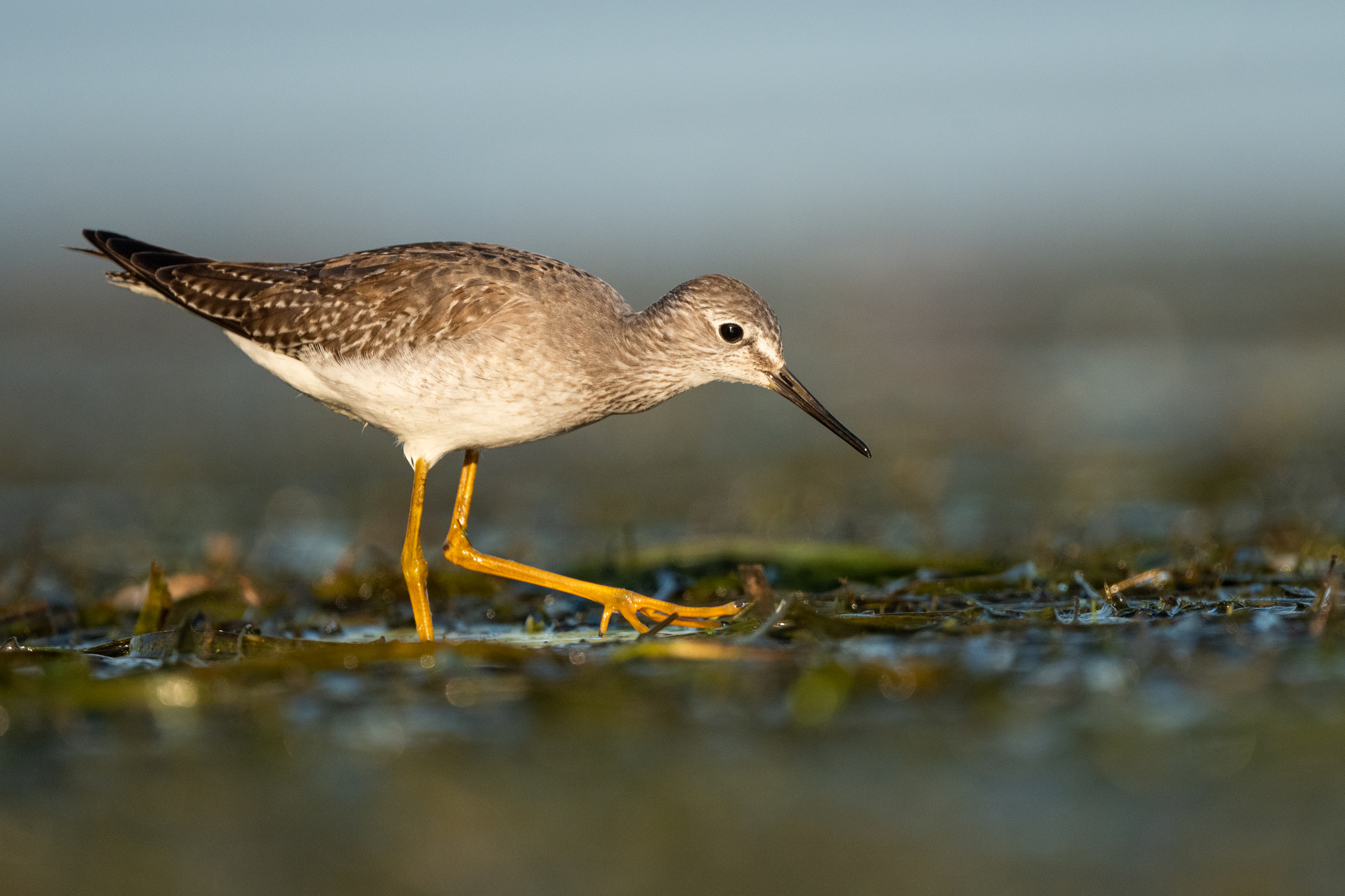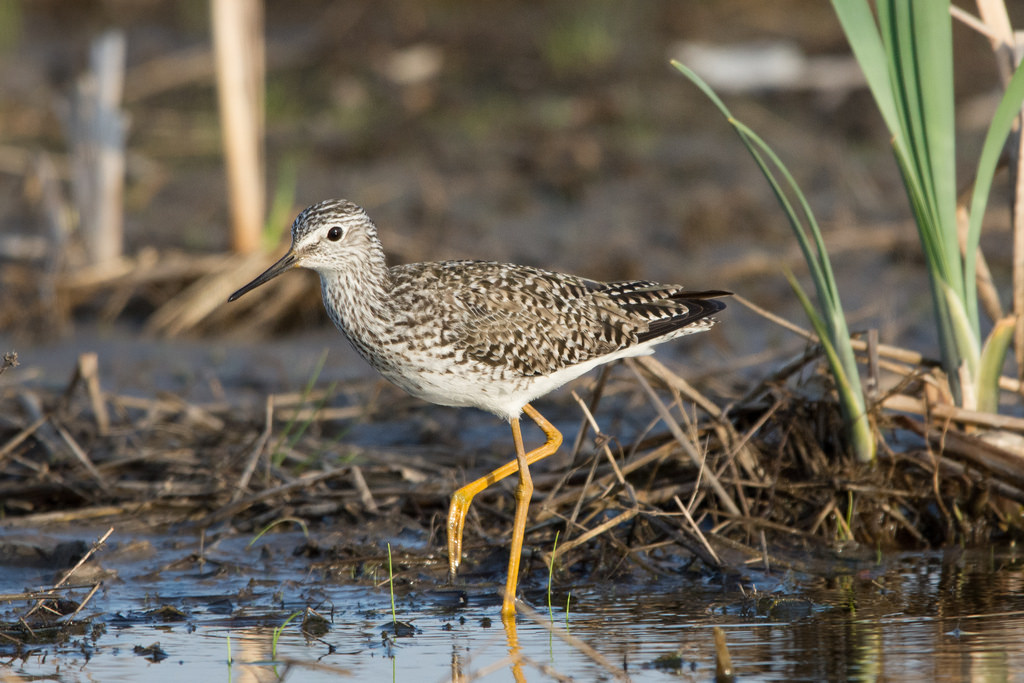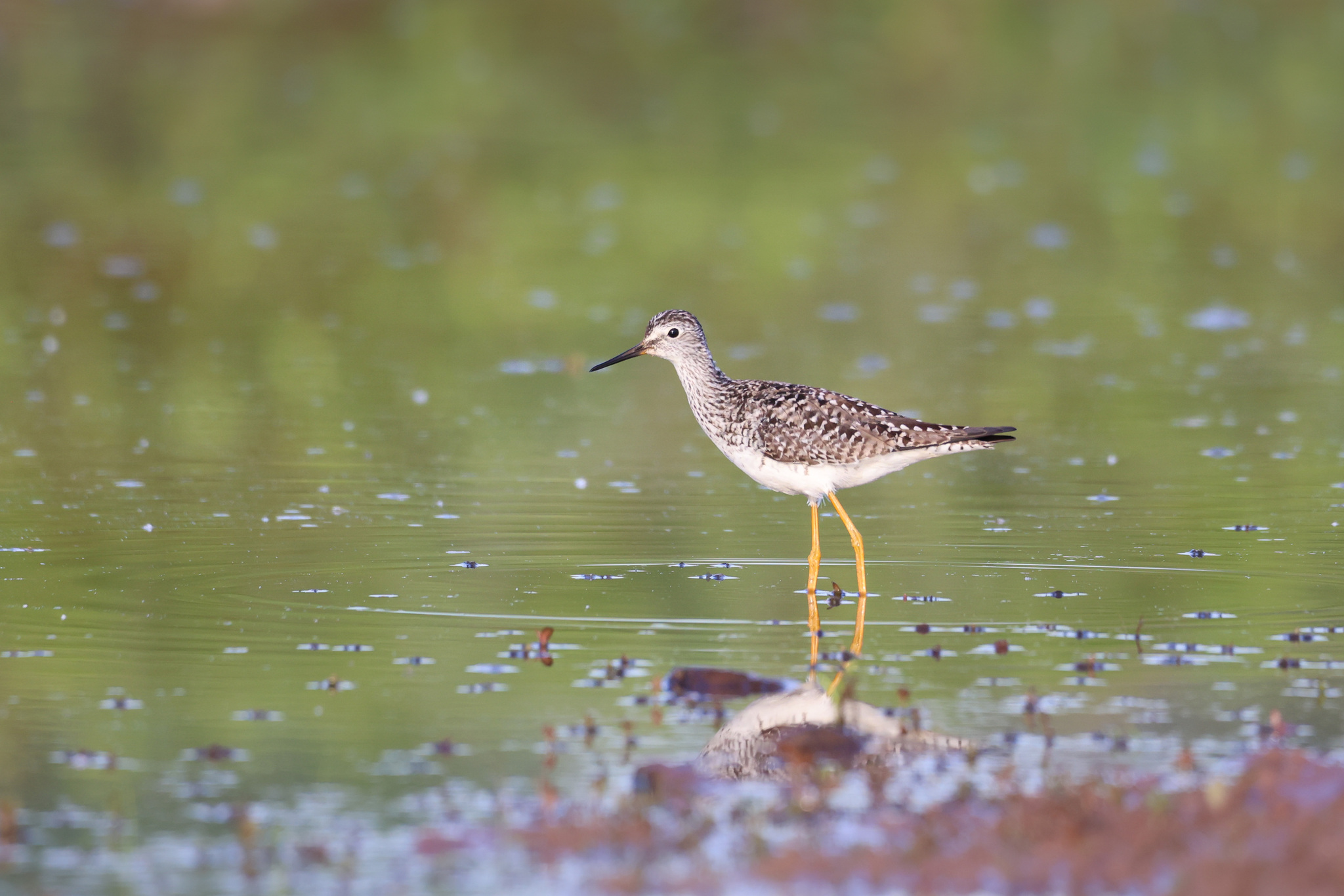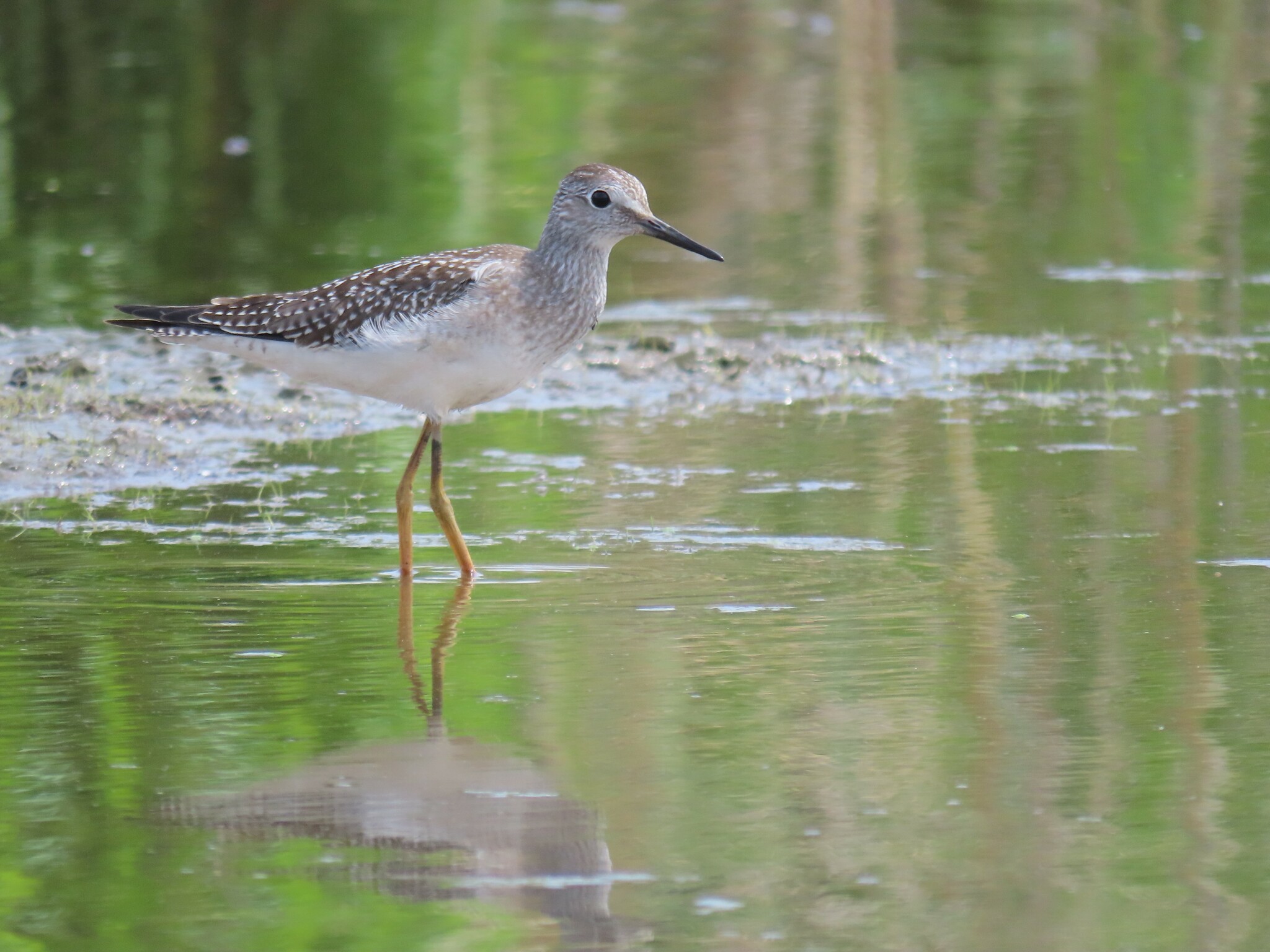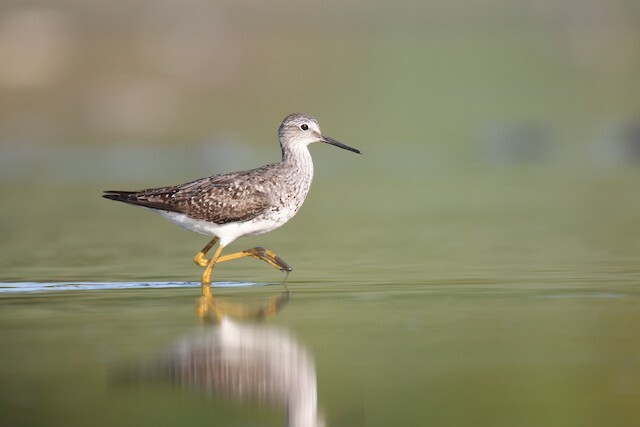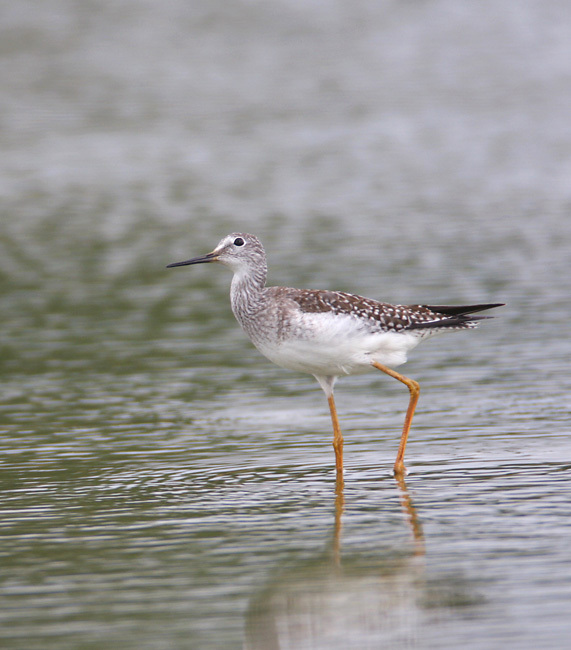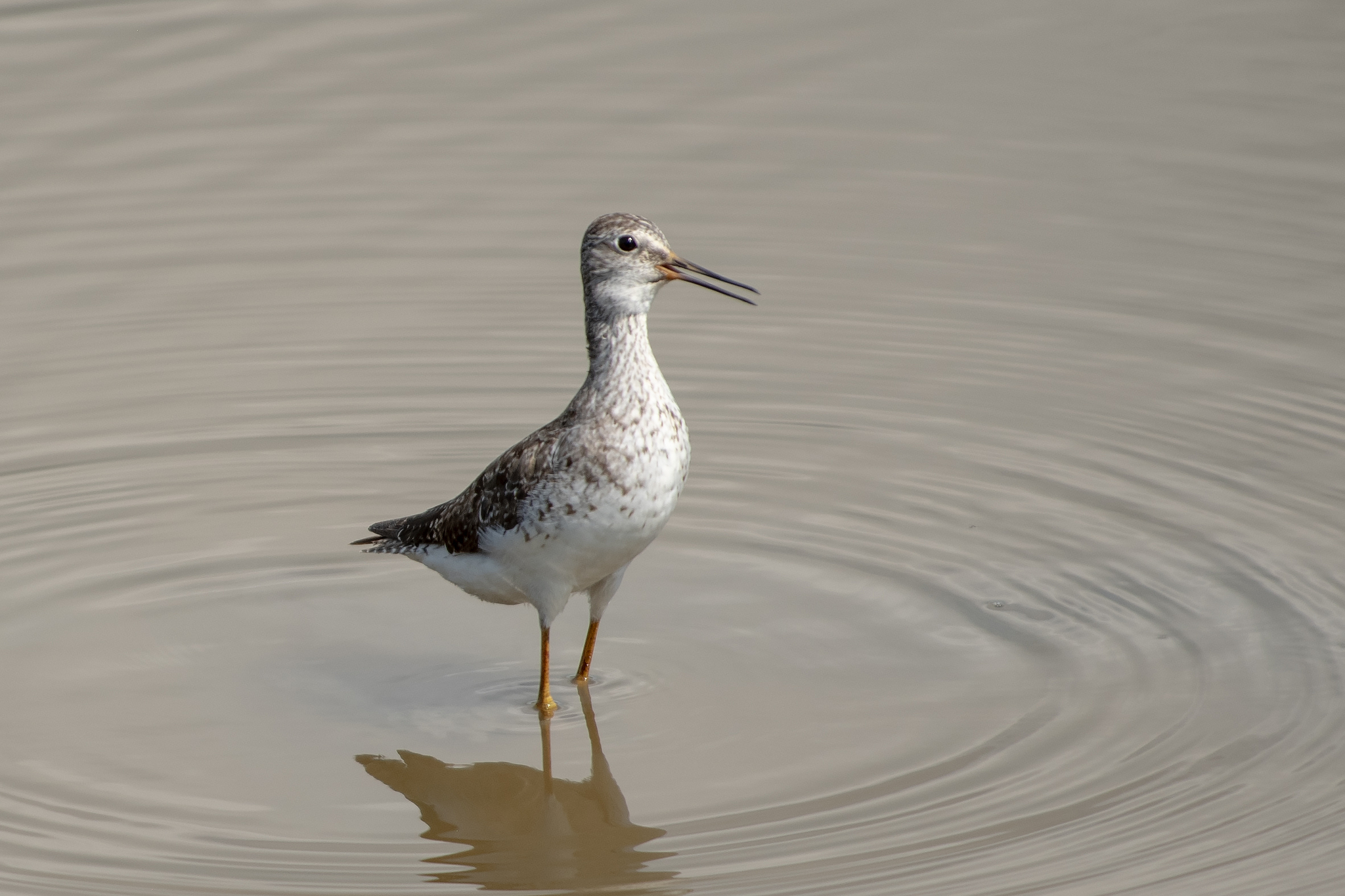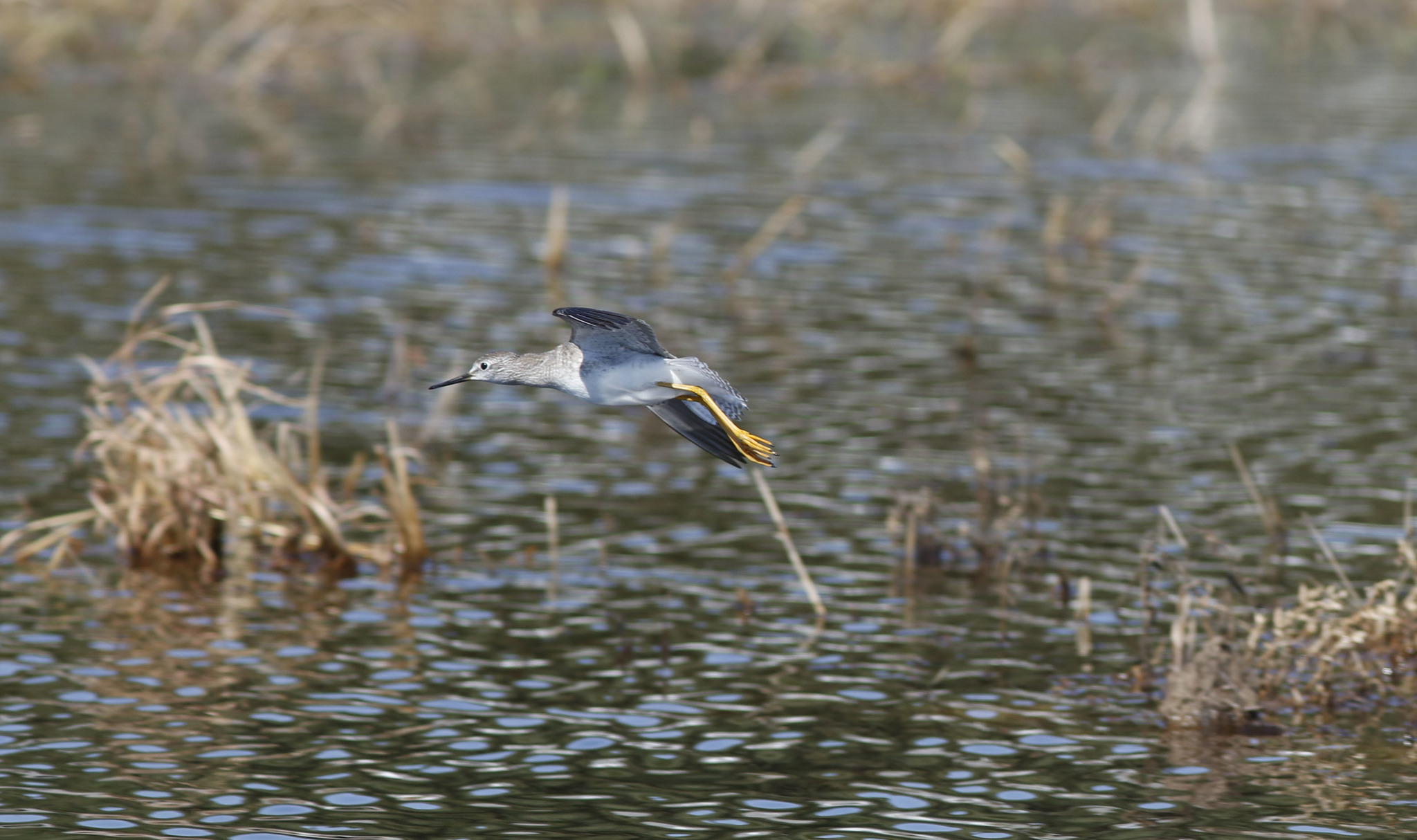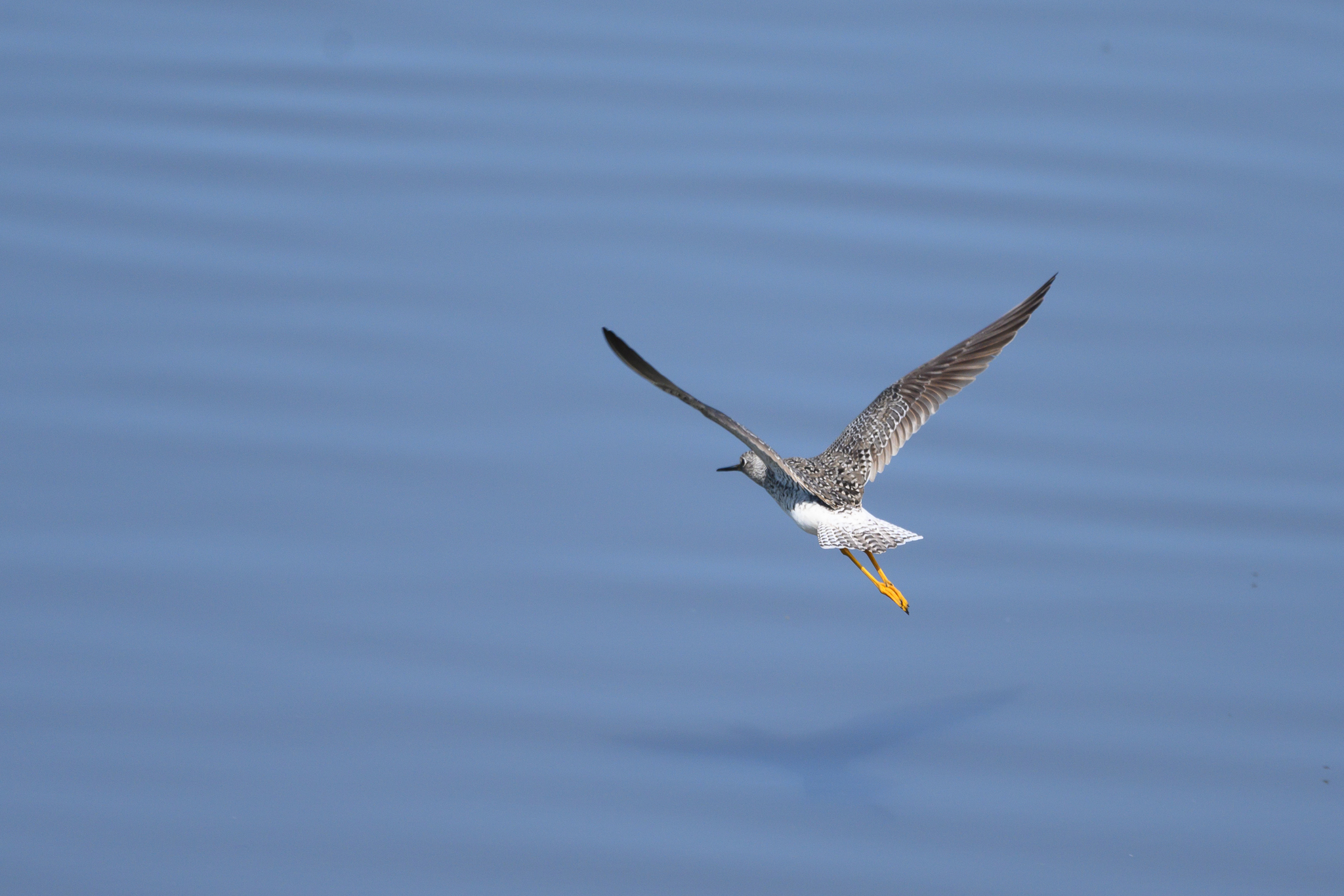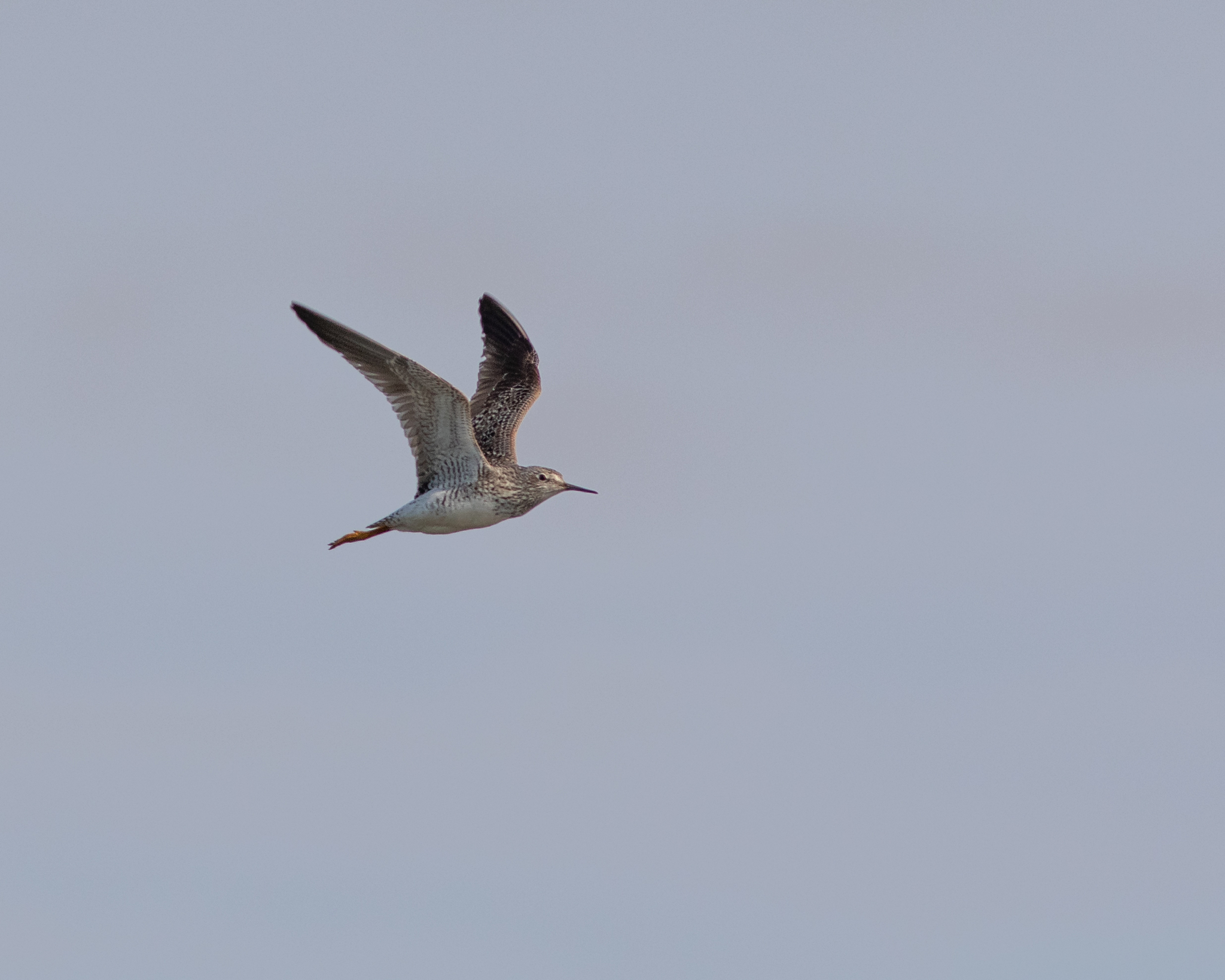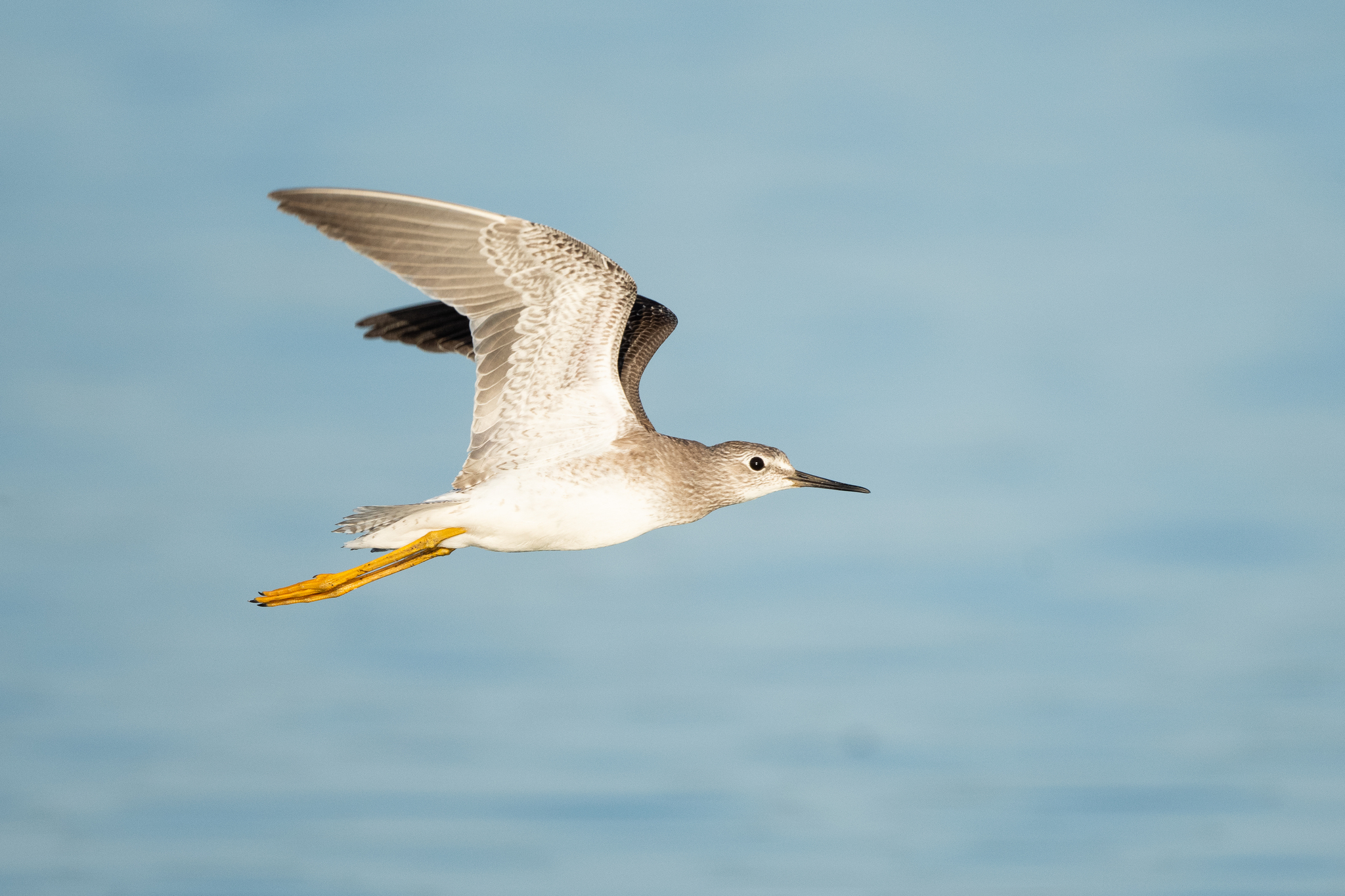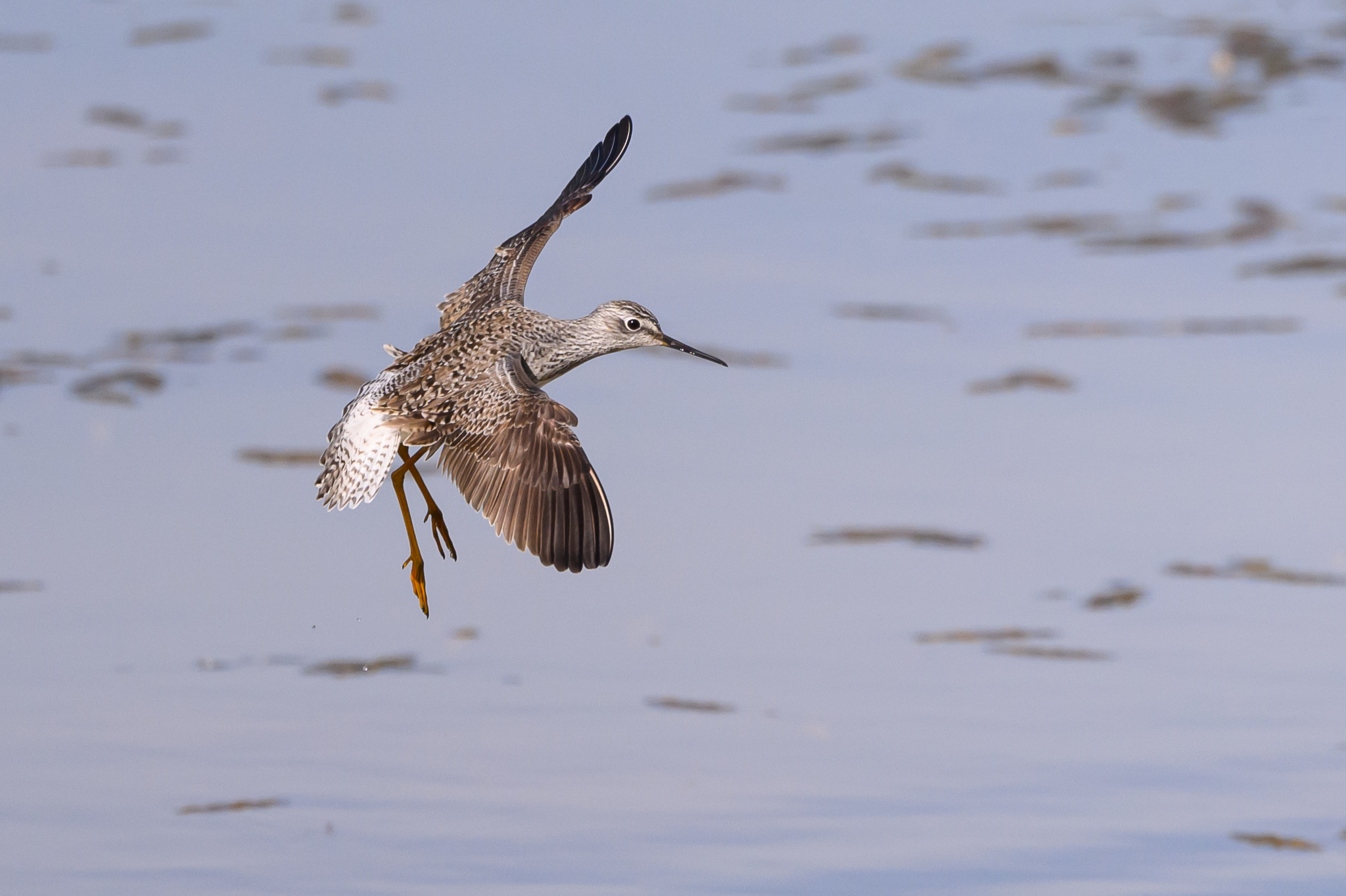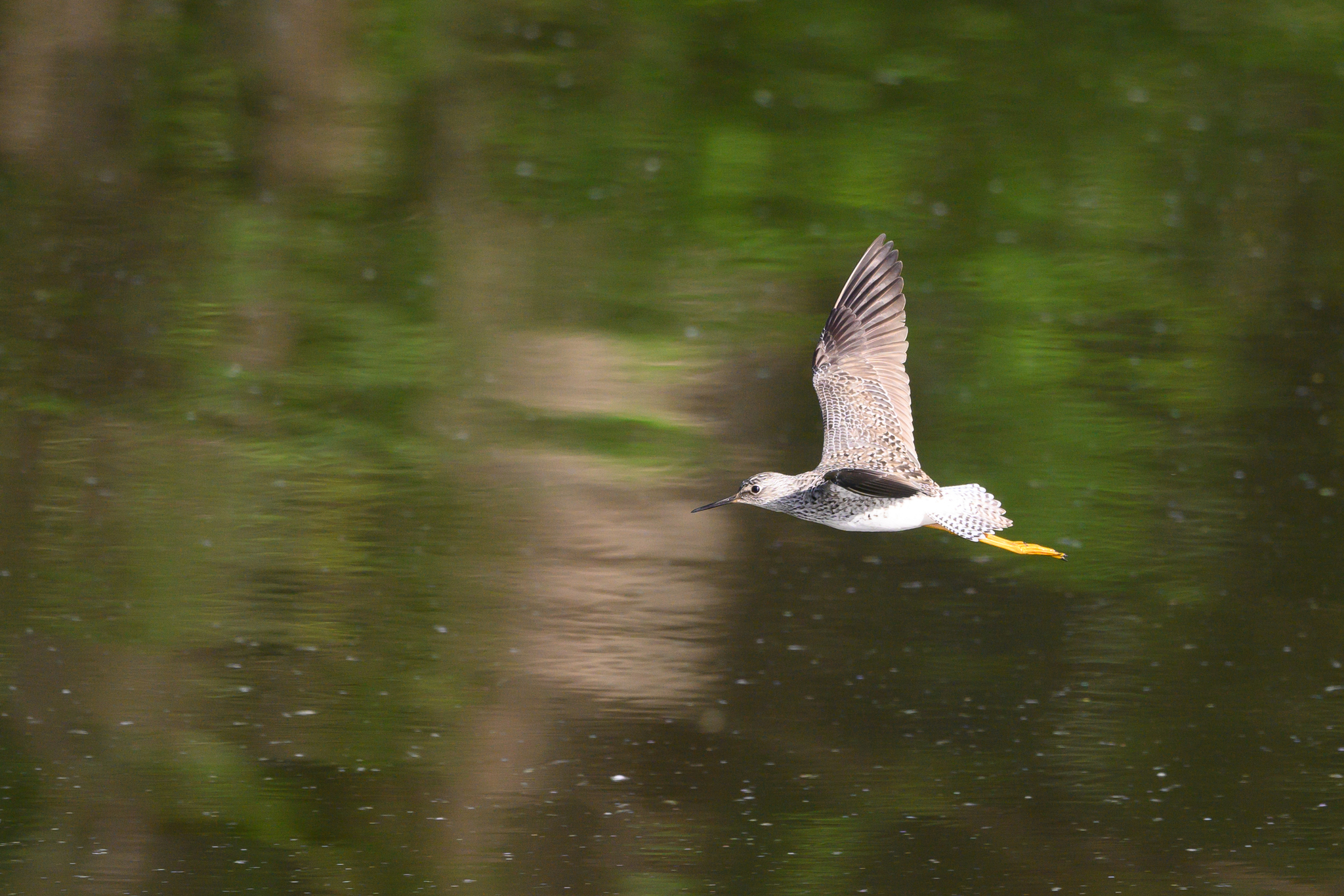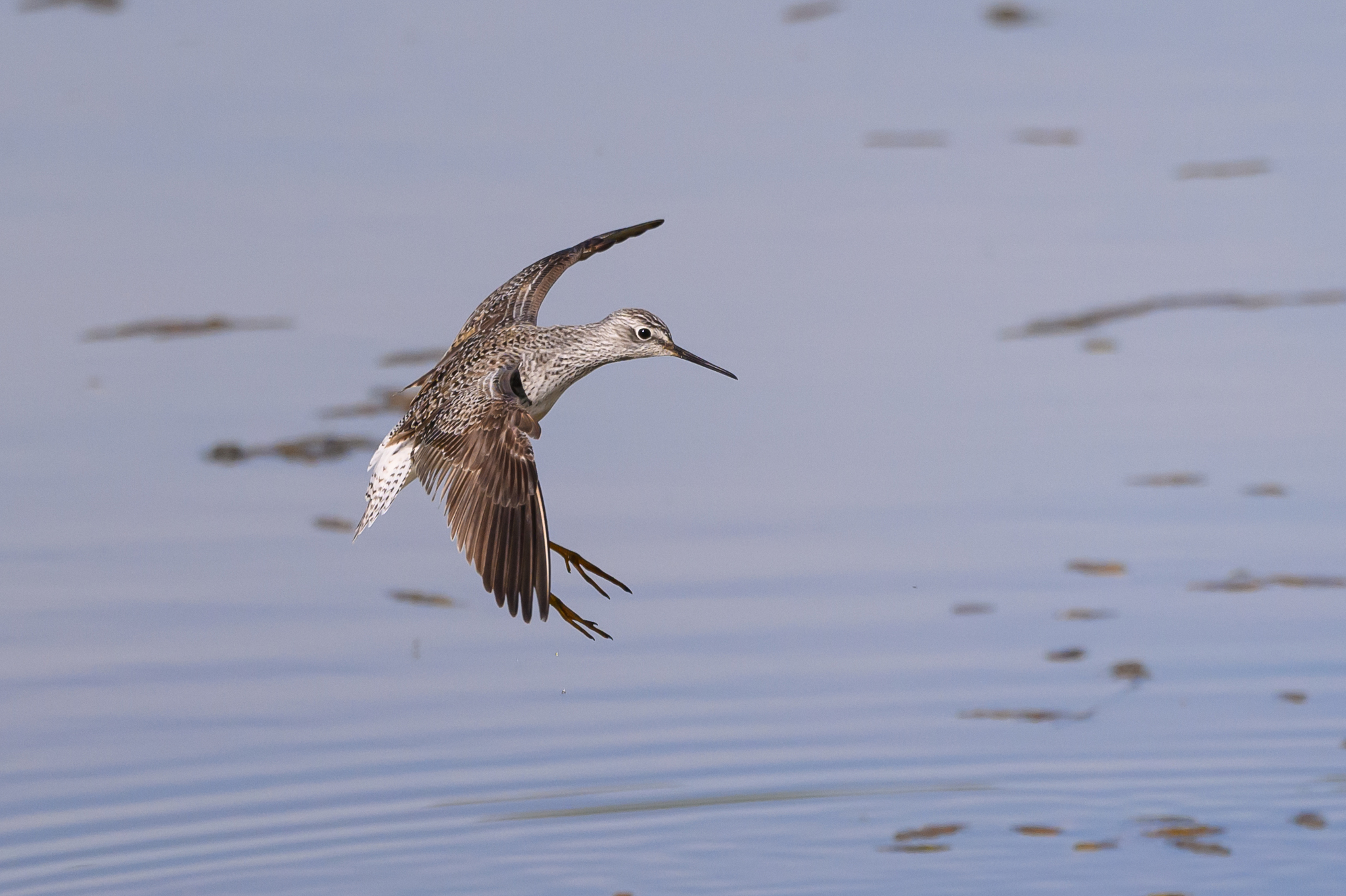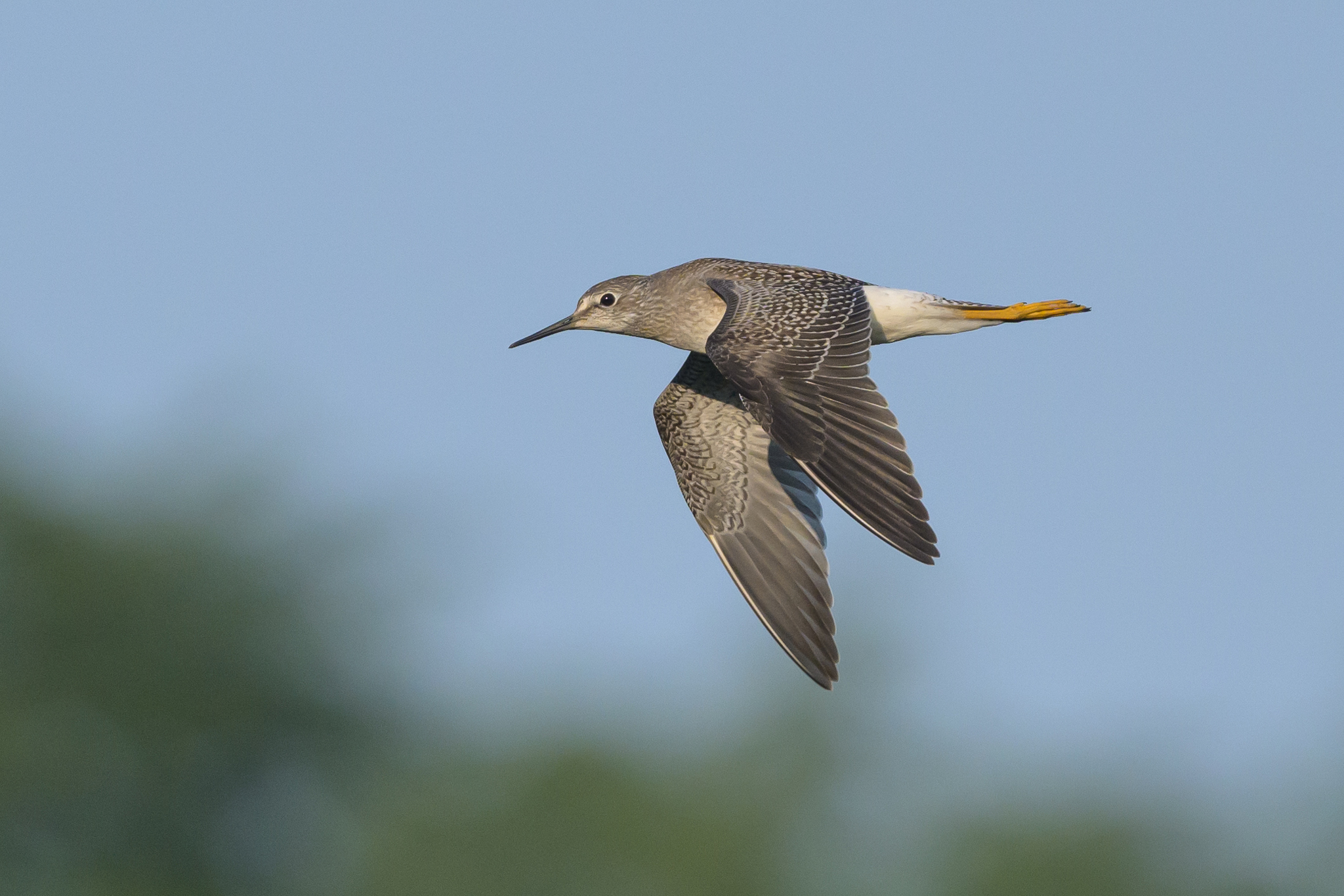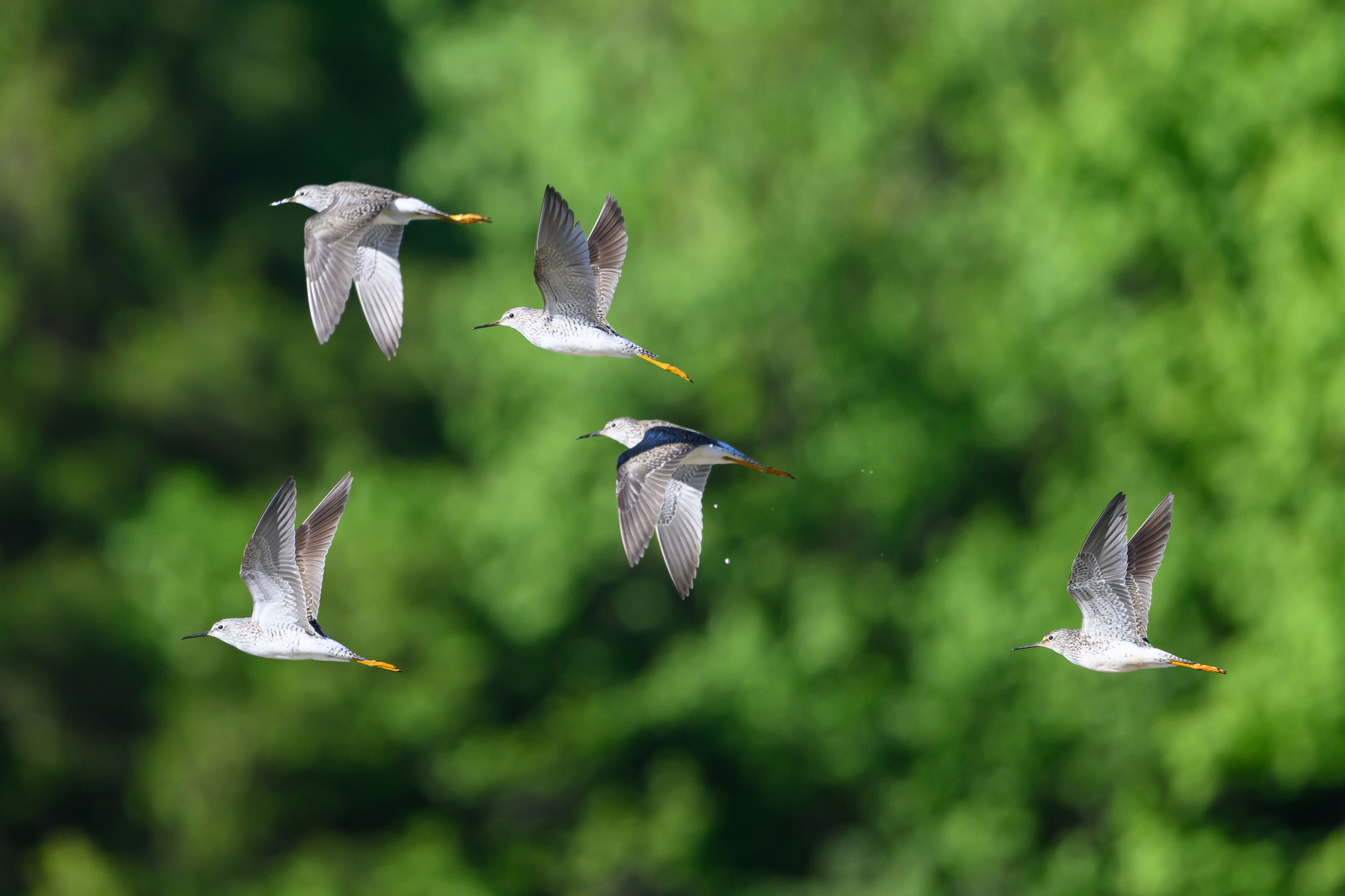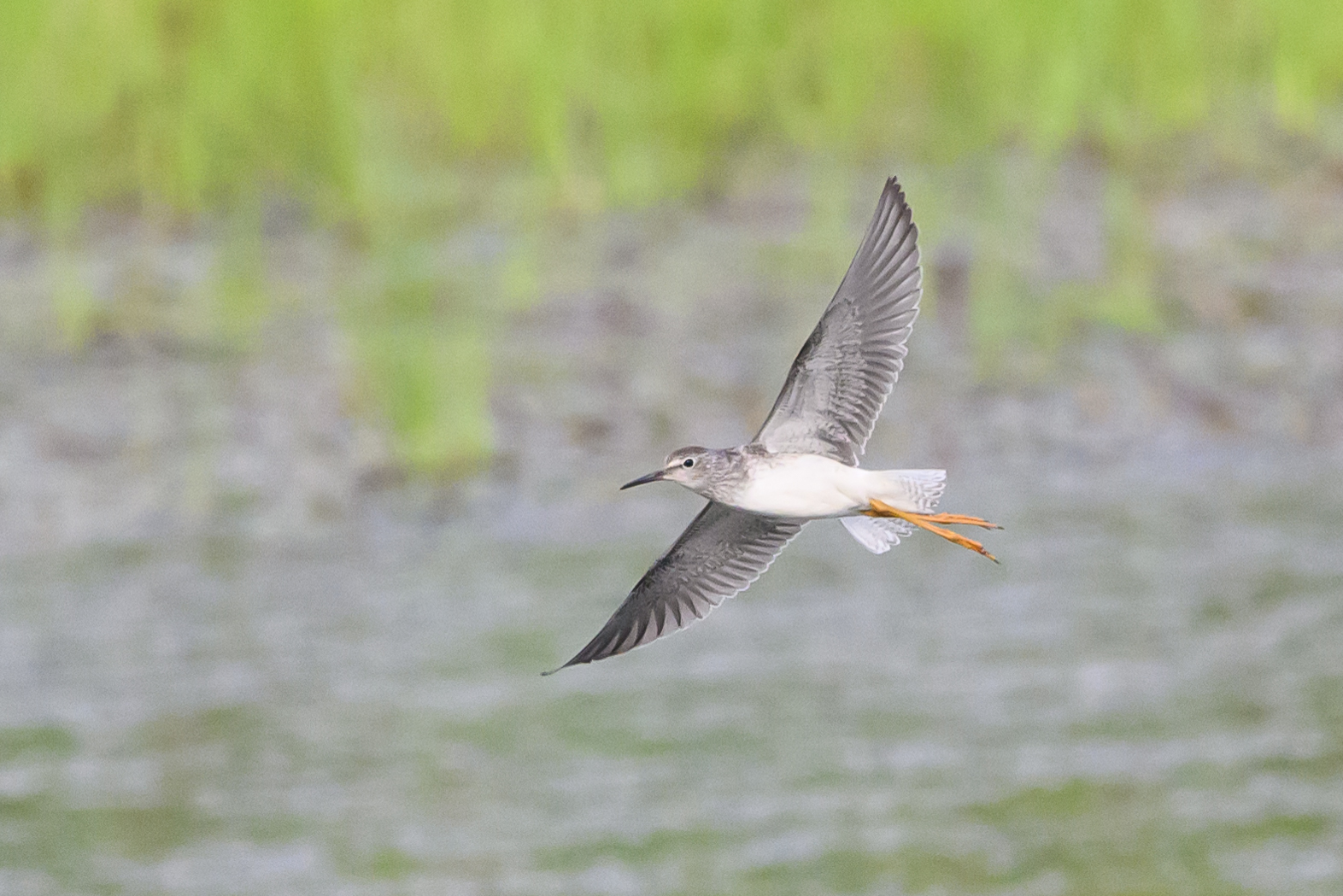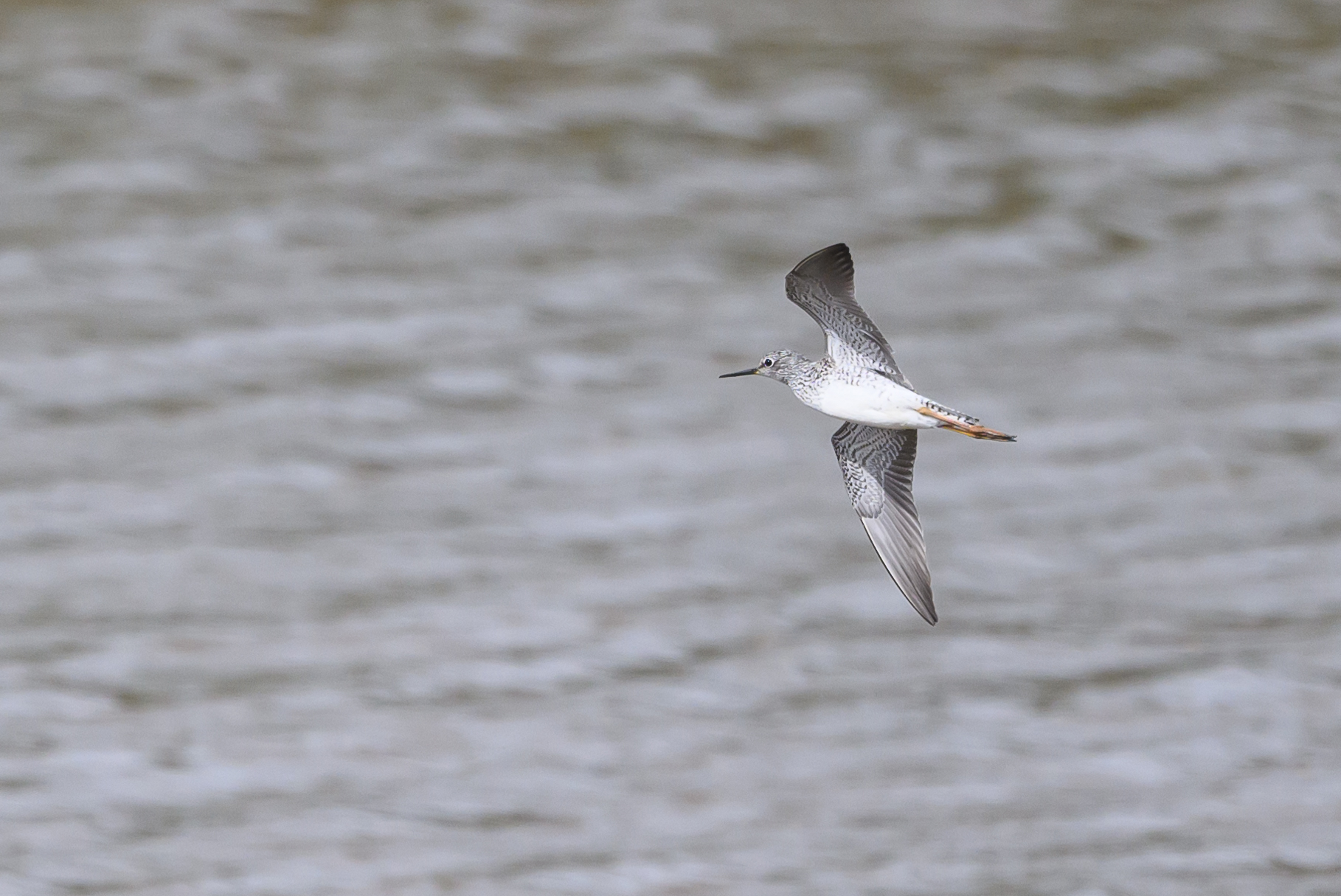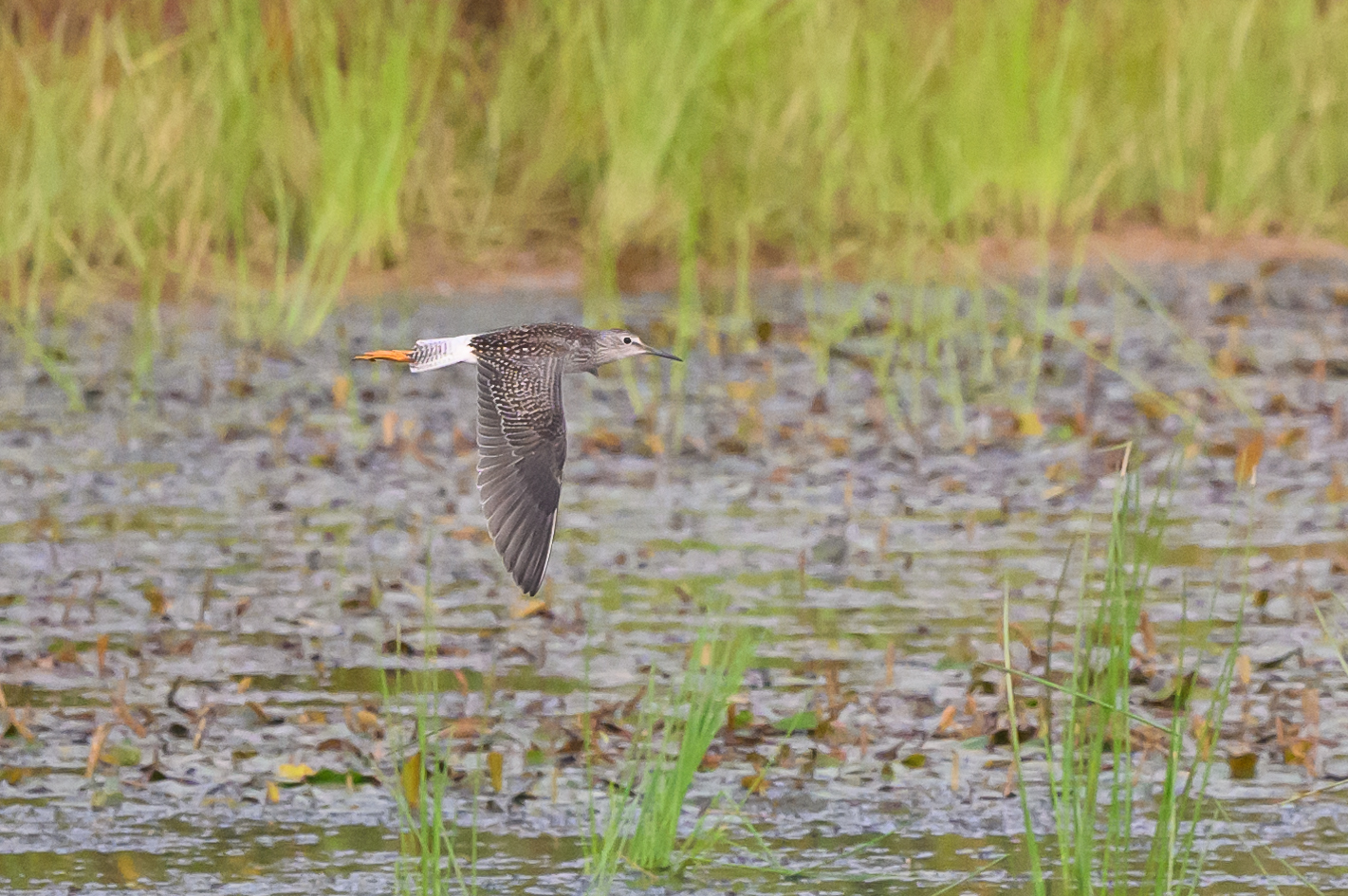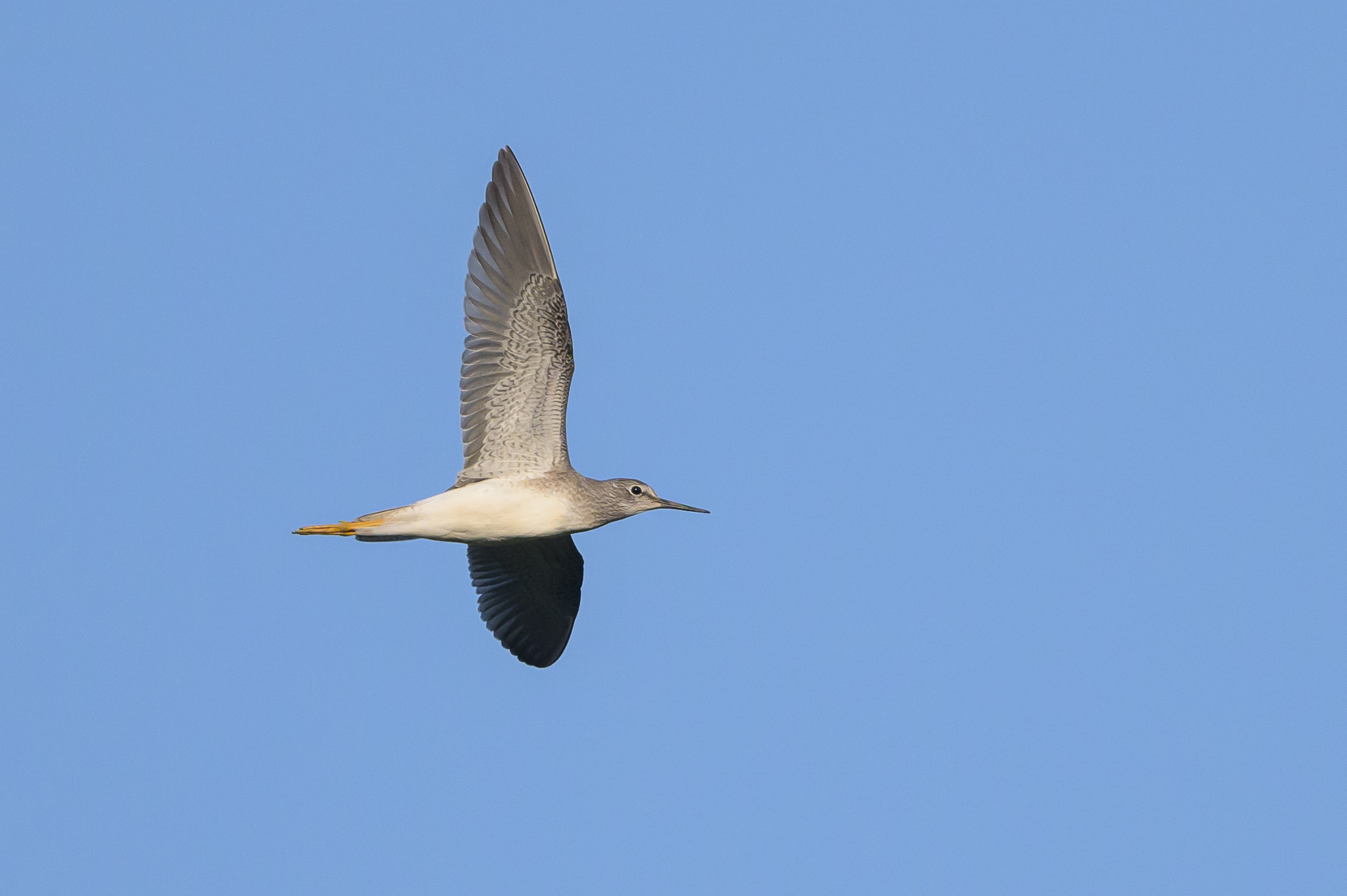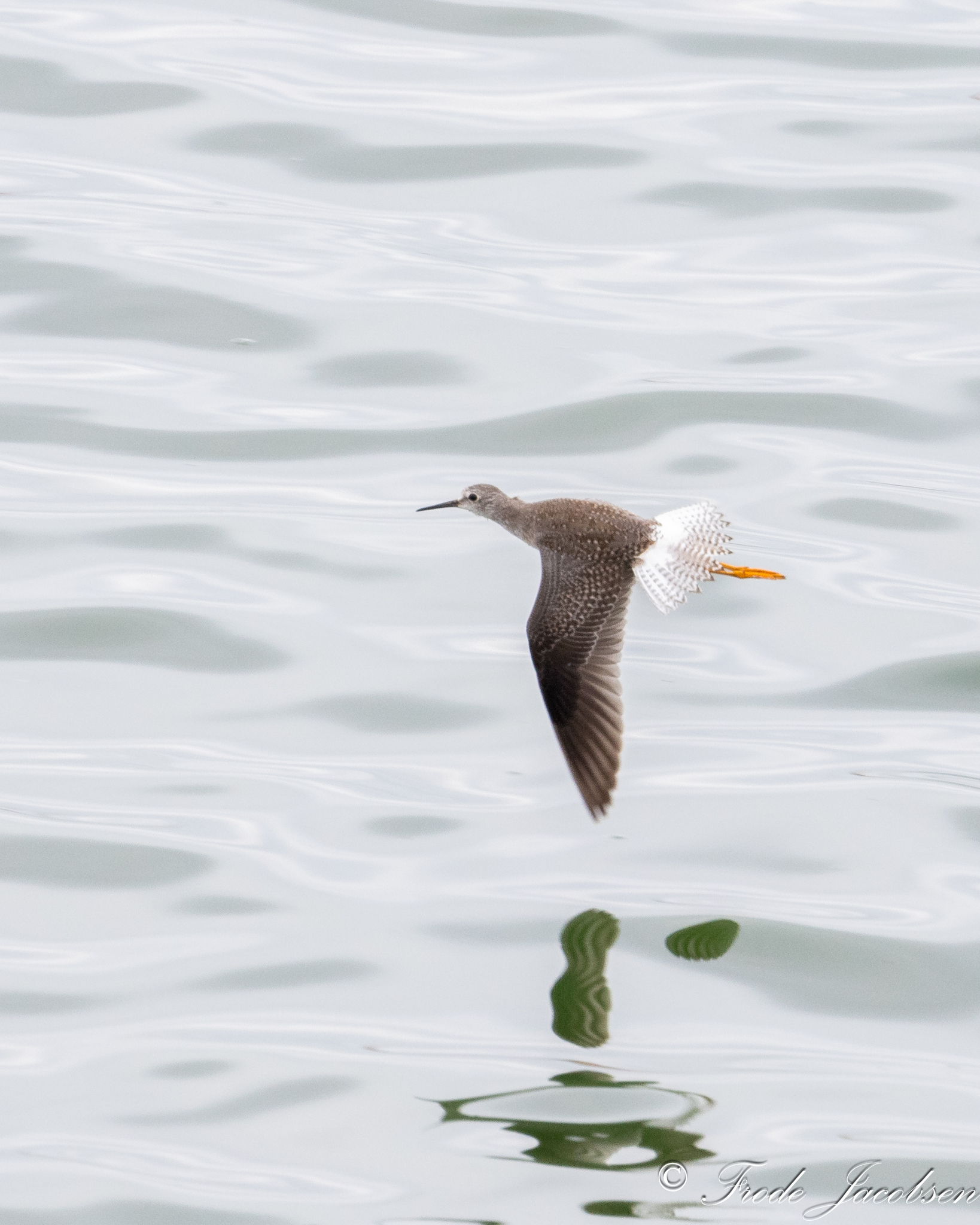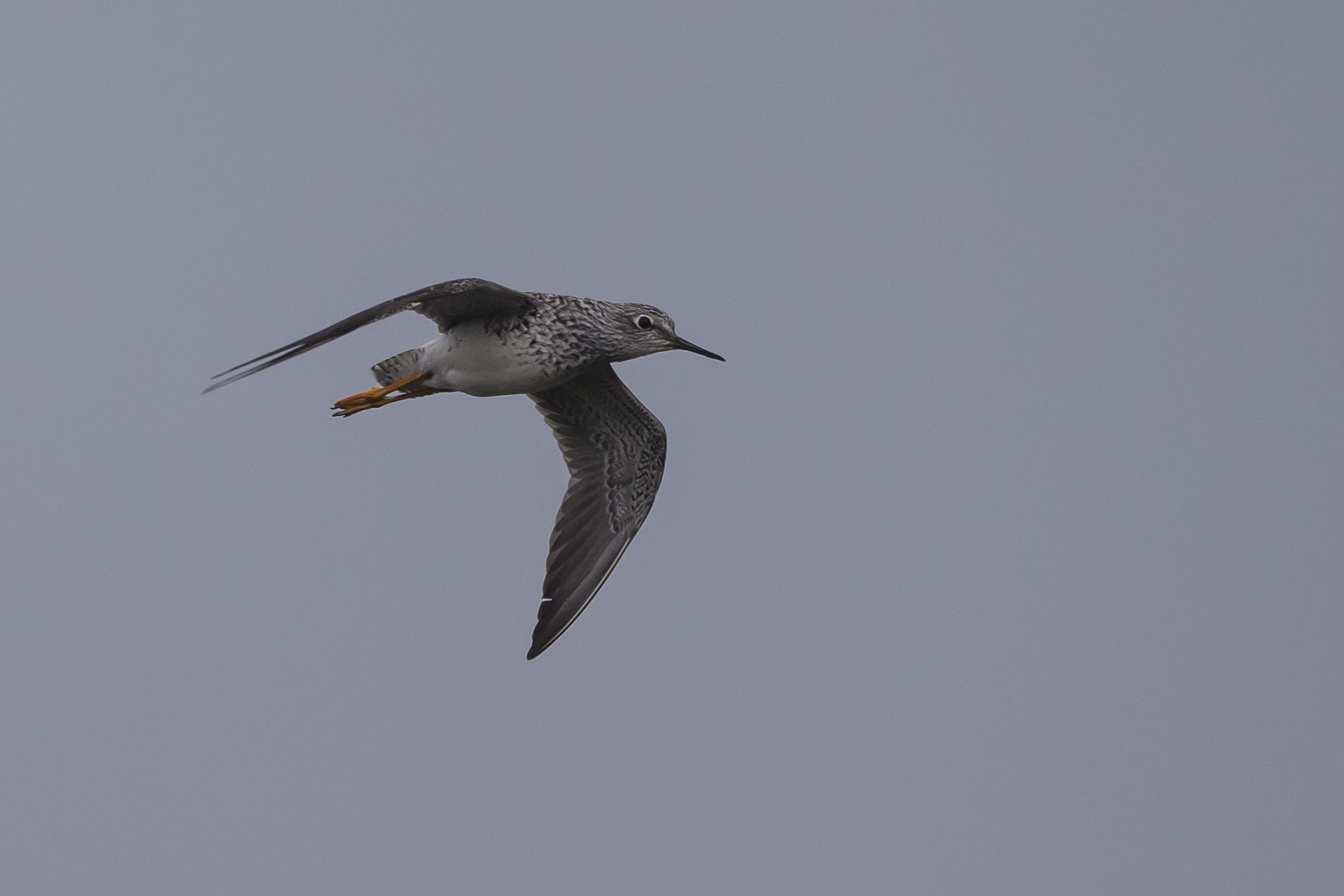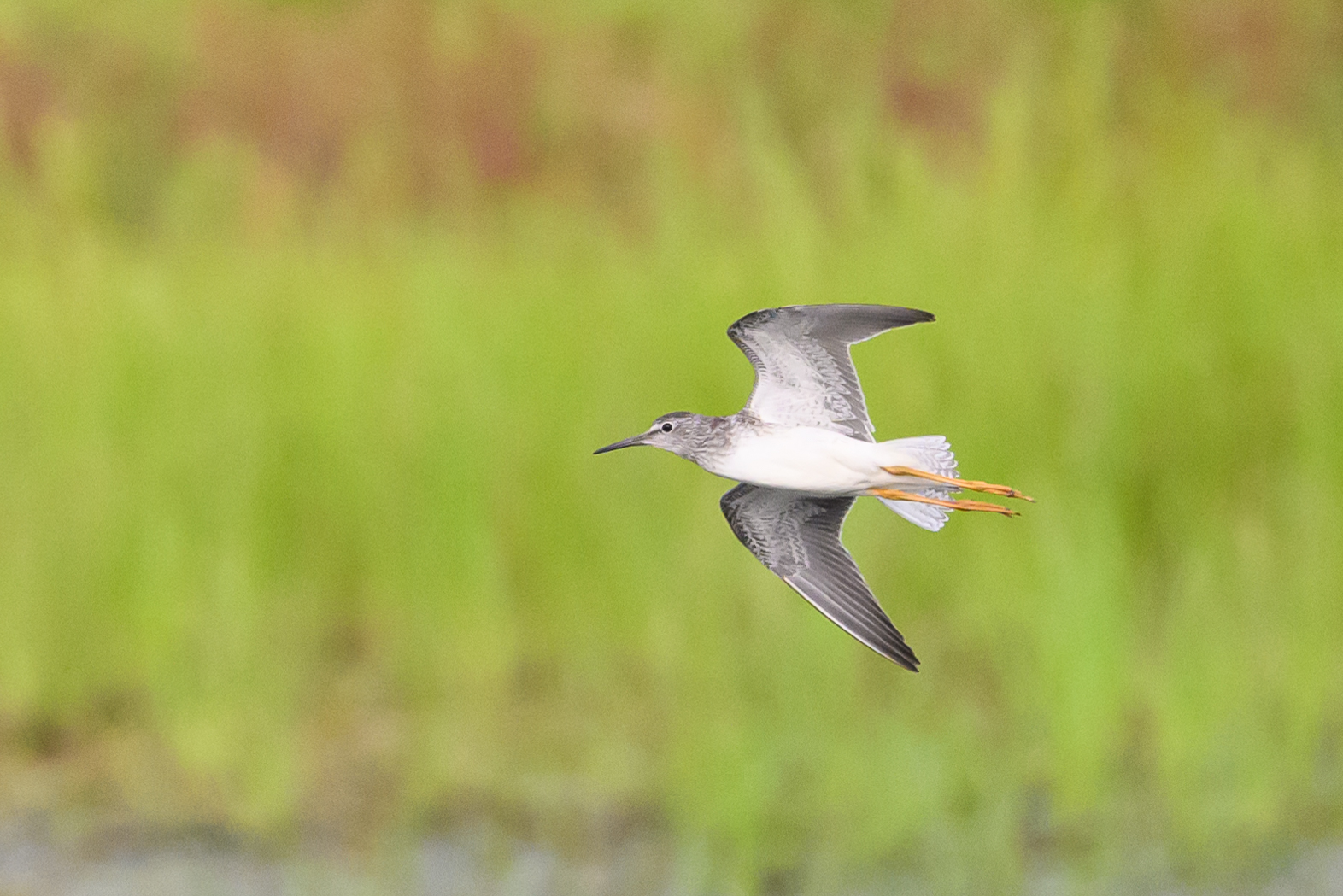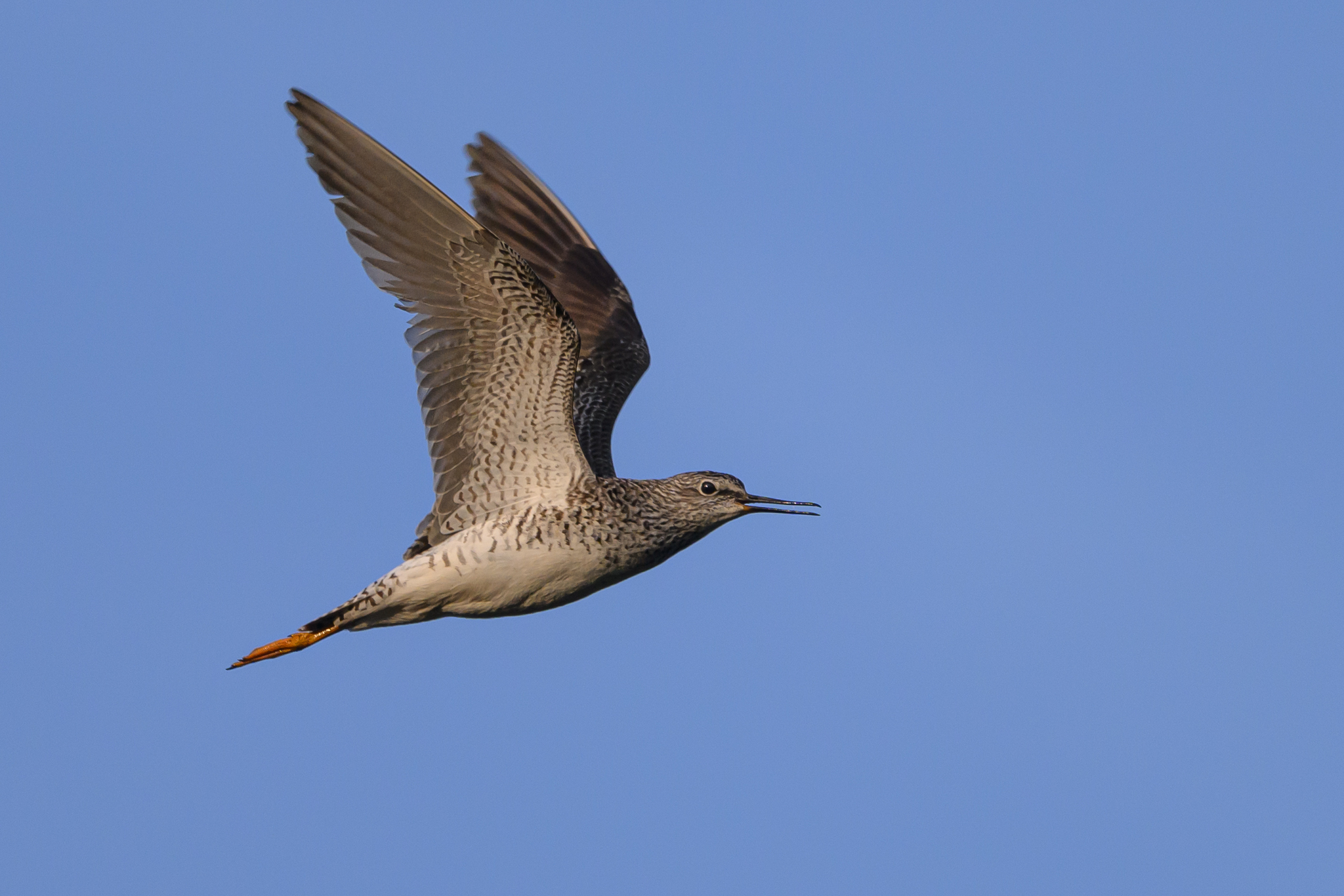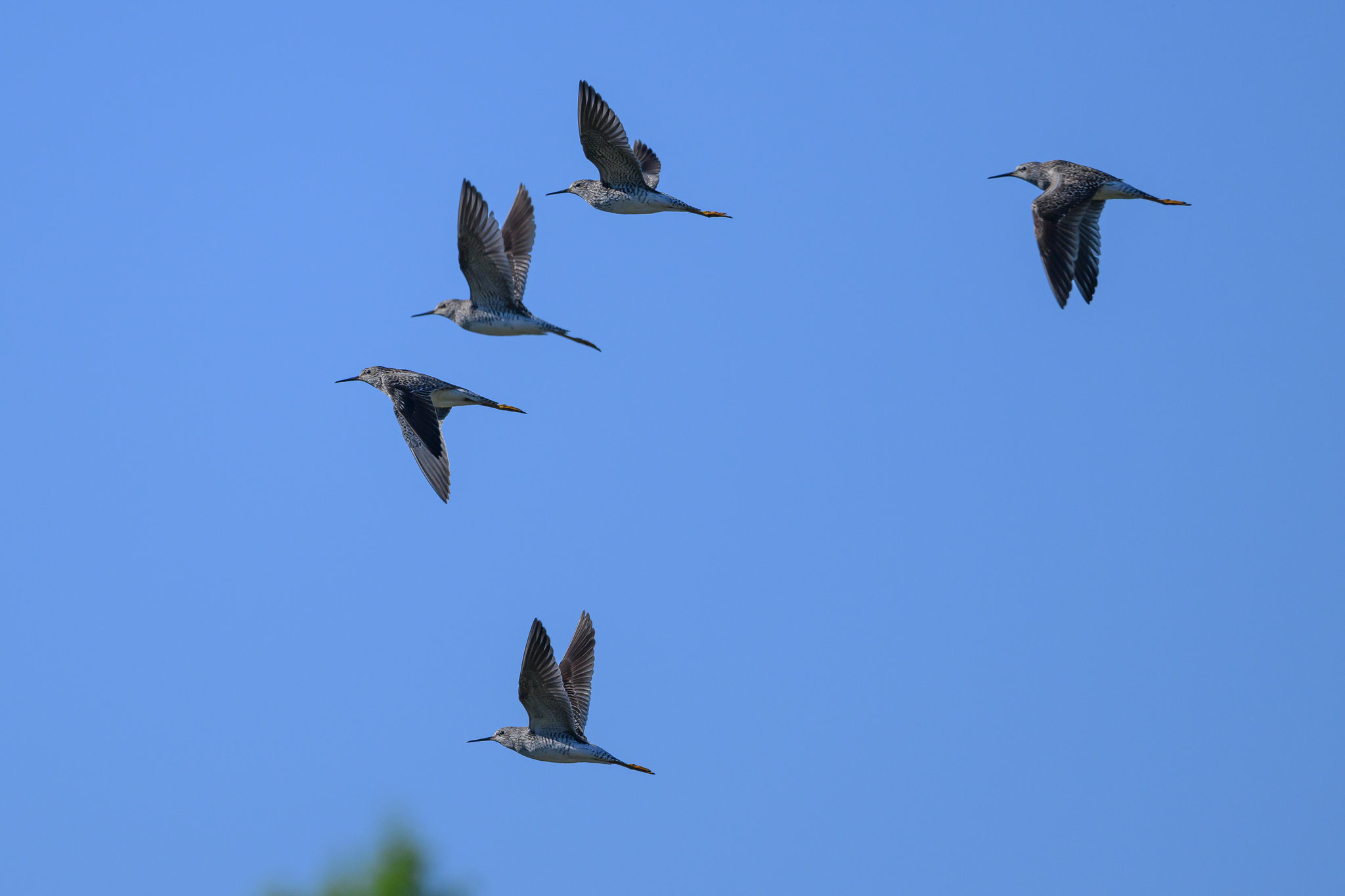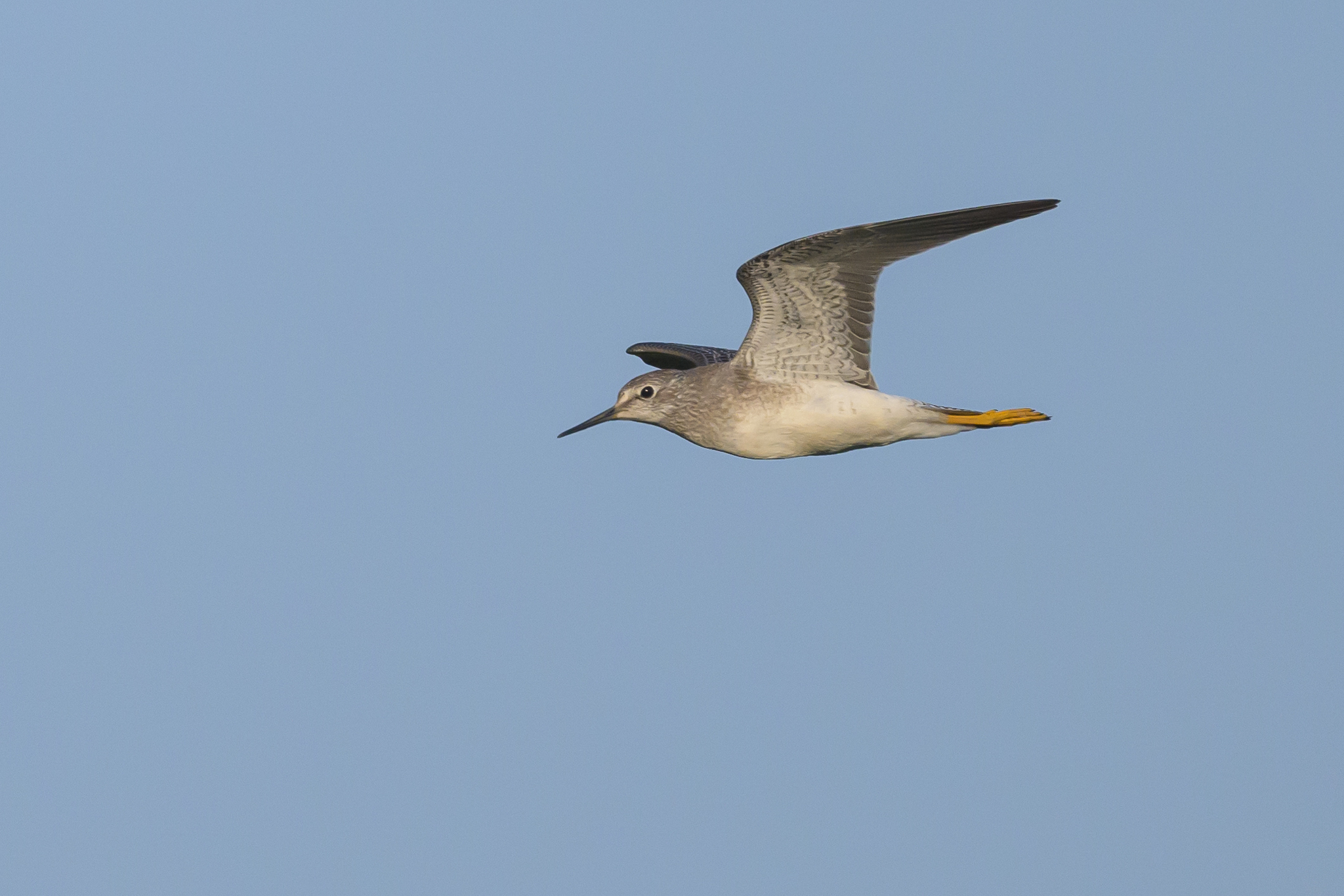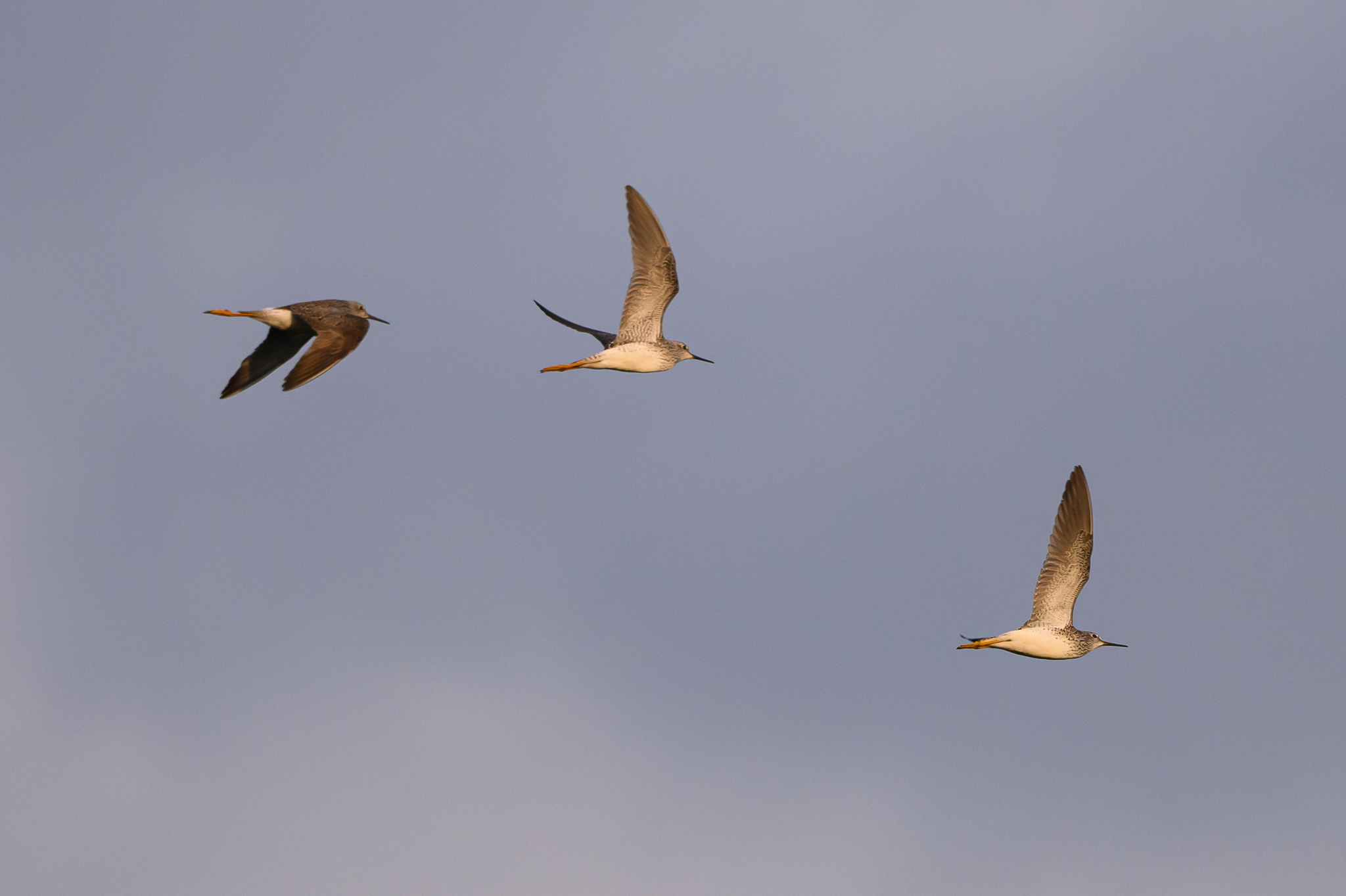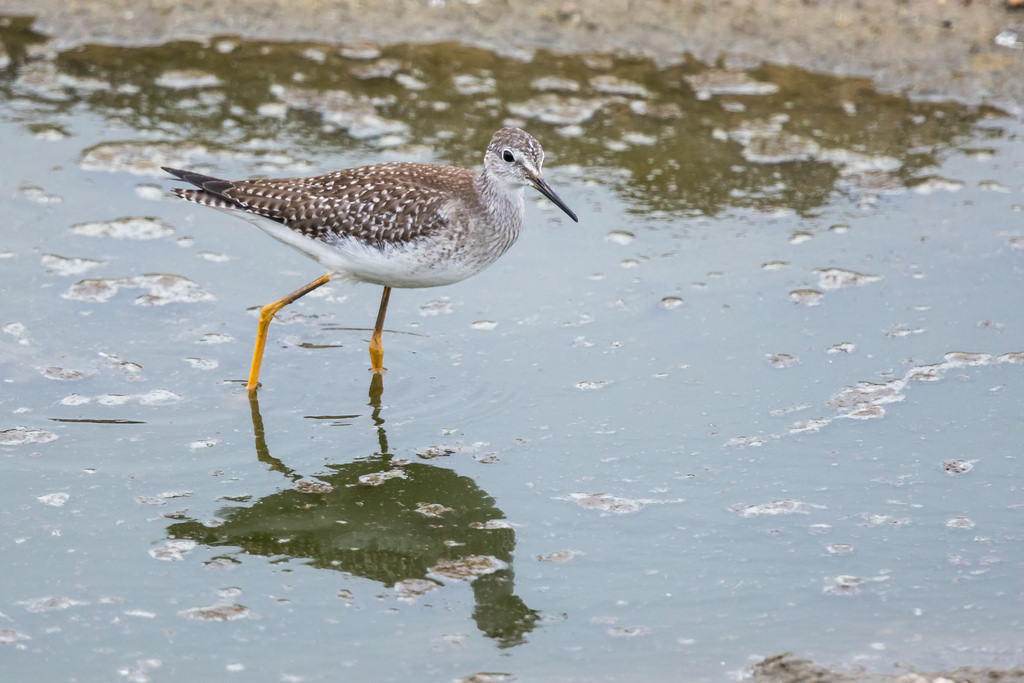Map Snapshot

























403 Records
Lesser Yellowlegs in Montgomery Co., Maryland (5/20/2024). (c) Stephen John Davies, some rights reserved (CC BY-NC). - Stephen John Davies via iNaturalist.
Seasonality Snapshot
Source: Wikipedia
| Lesser yellowlegs | |
|---|---|

| |
| Scientific classification | |
| Domain: | Eukaryota |
| Kingdom: | Animalia |
| Phylum: | Chordata |
| Class: | Aves |
| Order: | Charadriiformes |
| Family: | Scolopacidae |
| Genus: | Tringa |
| Species: | T. flavipes
|
| Binomial name | |
| Tringa flavipes (Gmelin, JF, 1789)
| |

| |
Breeding Migration Nonbreeding
| |
| Synonyms | |
|
Totanus flavipes | |
The lesser yellowlegs (Tringa flavipes) is a medium-sized shorebird. It breeds in the boreal forest region of North America.
Taxonomy
[edit]The lesser yellowlegs was formally described in 1789 by the German naturalist Johann Friedrich Gmelin in his revised and expanded edition of Carl Linnaeus's Systema Naturae. He placed it in the genus Scolopax and coined the binomial name Scolopax flavipes.[2] Gmelin based his description on the "yellow shanks" seen in the province of New York in autumn that had been described in 1785 by both the English ornithologist John Latham and the Welsh naturalist Thomas Pennant.[3][4] The lesser yellowlegs is now placed in the genus Tringa that was introduced in 1758 by the Swedish naturalist Carl Linnaeus in the tenth edition of his Systema Naturae.[5][6] The name Tringa is the Neo-Latin word given to the green sandpiper by the Italian naturalist Ulisse Aldrovandi in 1603 based on Ancient Greek trungas, a thrush-sized, white-rumped, tail-bobbing wading bird mentioned by Aristotle. The specific epithet flavipes combines the Latin flavus meaning "yellow" with pes meaning "foot".[7] The species is monotypic: no subspecies are recognised.[6]
Description
[edit]The lesser yellowlegs is a medium-large shorebird, 23–25 cm (9.1–9.8 in) in overall length and with a wingspan of 59–64 cm (23–25 in) and a weight of 67–94 g (2.4–3.3 oz). The sexes are similar both in plumage and in overall size. In breeding plumage, the upperparts are mottled with gray-brown, black and white. The underparts are white with irregular brown streaking on the breast and neck. In non-breeding plumage, the upperparts are more uniform gray-brown.[8] The legs are yellow. Compared to the greater yellowlegs, the bill is shorter (visually about the same length as the head), slim, straight, and uniformly dark. The breast is streaked and the flanks are finely marked with short bars.[9]



This species is similar in appearance to the larger greater yellowlegs, although it is more closely related to the much larger willet;[10] the fine, clear, and dense pattern of the neck shown in breeding plumage indicates these species' actual relationships.
The call of this bird is softer than that of the greater yellowlegs.
Distribution and habitat
[edit]They migrate to the Gulf coast of the United States, the Caribbean, and south to South America. This species is a regular vagrant to western Europe; in Great Britain about five birds arrive each year, mostly between August and October,[11] with the occasional individual overwintering. Their breeding habitat is clearings near ponds in the boreal forest region from Alaska to Quebec.
Behavior and ecology
[edit]Breeding
[edit]The nest is a depression on dry mossy ground and is usually well hidden. The clutch is normally four eggs. These are buff or gray-brown and are covered in spots of various shades of brown. On average they measure 42 mm × 29 mm (1.7 in × 1.1 in). They are incubated for 22-23 days by both sexes. Both parents brood and care for the precocial young which leave the nest a few hours after hatching. They can feed themselves on departure from the nest. They fly at 23 to 31 days.[8]
Food and feeding
[edit]Lesser yellowlegs forage in shallow water, sometimes using their bill to stir up the water. They mainly eat insects (such as flies, beetles, water boatmen, and mayflies),[12] small fish, crustaceans, aquatic worms, molluscs (such as snails), spiders, and seeds.[13][12]
References
[edit]- ^ BirdLife International (2024). "Tringa flavipes". IUCN Red List of Threatened Species. 2024: e.T22693235A208218115. doi:10.2305/IUCN.UK.2024-2.RLTS.T22693235A208218115.en. Retrieved 12 November 2021.
- ^ Gmelin, Johann Friedrich (1789). Systema naturae per regna tria naturae : secundum classes, ordines, genera, species, cum characteribus, differentiis, synonymis, locis (in Latin). Vol. 1, Part 2 (13th ed.). Lipsiae [Leipzig]: Georg. Emanuel. Beer. p. 659.
- ^ Latham, John (1785). A General Synopsis of Birds. Vol. 3, Part 1. London: Printed for Leigh and Sotheby. p. 152-153, No. 24.
- ^ Pennant, Thomas (1785). Arctic Zoology. Vol. 2. London: Printed by Henry Hughs. p. 468, No. 378.
- ^ Linnaeus, Carl (1758). Systema Naturae per regna tria naturae, secundum classes, ordines, genera, species, cum characteribus, differentiis, synonymis, locis (in Latin). Vol. 1 (10th ed.). Holmiae (Stockholm): Laurentii Salvii. p. 148.
- ^ a b Gill, Frank; Donsker, David; Rasmussen, Pamela, eds. (August 2022). "Sandpipers, snipes, coursers". IOC World Bird List Version 12.2. International Ornithologists' Union. Retrieved 6 November 2022.
- ^ Jobling, James A. (2010). The Helm Dictionary of Scientific Bird Names. London: Christopher Helm. pp. 390, 161. ISBN 978-1-4081-2501-4.
- ^ a b Tibbitts, T.L.; Moskoff, W. (2020). Poole, A.F. (ed.). "Lesser Yellowlegs (Tringa flavipes), version 1.0". Birds of the World. Ithaca, NY, USA: Cornell Lab of Ornithology. doi:10.2173/bow.lesyel.01. S2CID 216475862. Retrieved 25 September 2020.
- ^ Scott, Shirley L., ed. (1994). Field Guide to the Birds of North America (2nd ed.). The National Geographic Society. pp. 114–115, 137. ISBN 0-87044-692-4.
- ^ Pereira, Sérgio Luiz; Baker, Alan J. (2005). "Multiple gene evidence for parallel evolution and retention of ancestral morphological states in the shanks (Charadriiformes: Scolopacidae)". The Condor. 107 (3): 514–526. doi:10.1650/0010-5422(2005)107[0514:MGEFPE]2.0.CO;2. S2CID 86221767.
- ^ "Lesser Yellowlegs (species profile)". British Trust for Ornithology. Retrieved 11 August 2024.
- ^ a b "Tringa flavipes (Lesser yellowlegs)". Animal Diversity Web.
- ^ "Tringa flavipes (Lesser Yellowlegs)" (PDF). The Online Guide to the Animals of Trinidad and Tobago. UWI.
External links
[edit]- "Lesser yellowlegs species account". Cornell Lab of Ornithology.
- "Lesser yellowlegs - Tringa flavipes". USGS Patuxent Bird Identification InfoCenter.
- "Tringa flavipes". Avibase.
- "Lesser yellowlegs media". Internet Bird Collection.
- Lesser yellowlegs photo gallery at VIREO (Drexel University)
- Interactive range map of Tringa flavipes at IUCN Red List maps
